Is Le Creuset cast iron really the best? We test these icons against the rest
Our food team boil down the best to find your one-stop-pot for casseroles, slow cooks, and stews
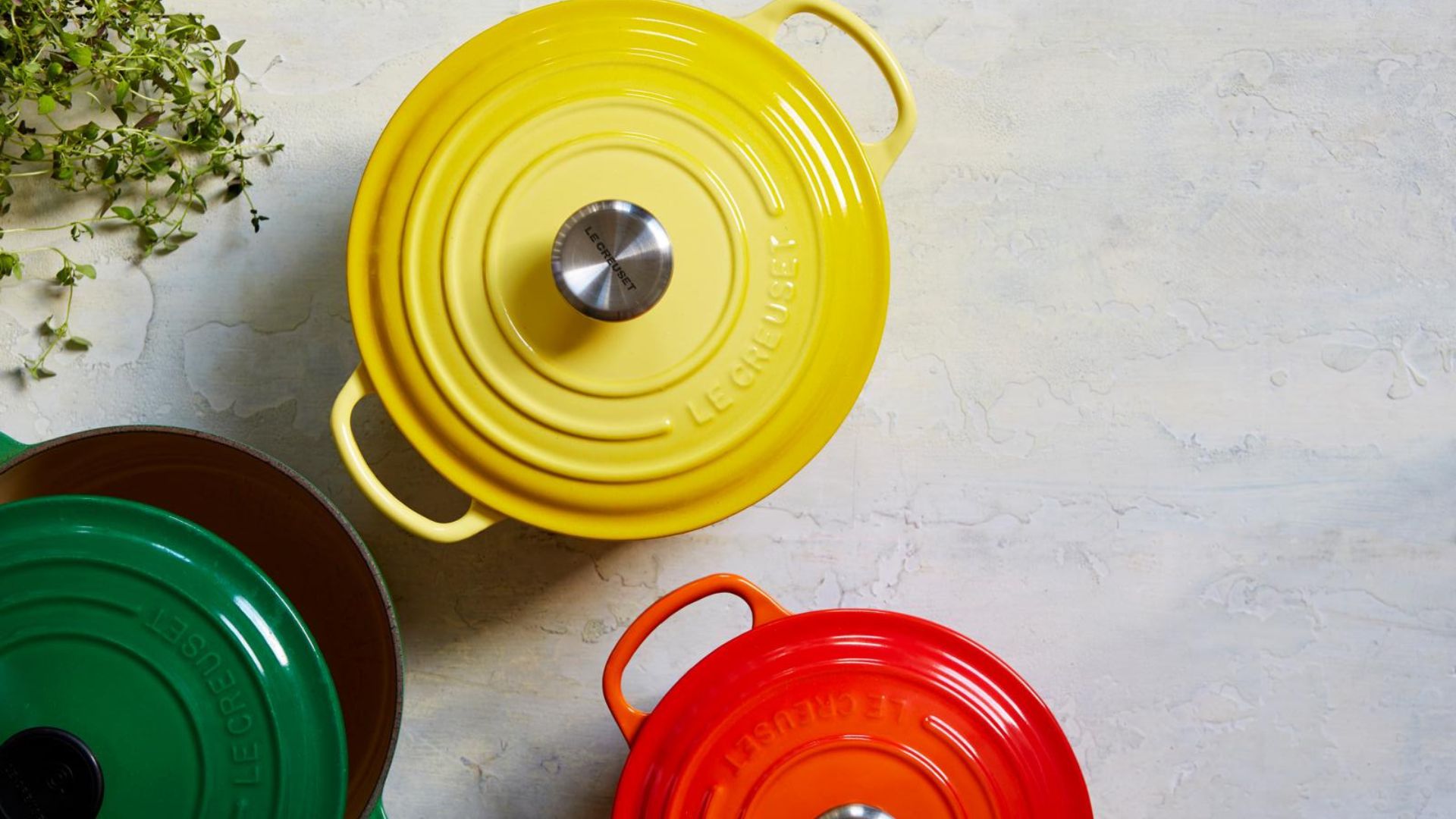

We’re finally in the season when your cast iron can take centre stage. While mine works hard all year round, serving up everything from summer salads and fruity tarts to hearty stews and loaves of bread, you might only be dusting yours off now that casserole season has arrived. So, which one should you go for? And is Le Creuset really worth the splurge?
Nobody loves Le Creuset more than me. It’s the heirloom I plan to keep in the family as if it were jewellery and I've explained why in detail when answering the ever-present "is Le Creuset worth it?" question. And while its story and quality are undeniably alluring, the price tags are high, and those pans are heavy. Luckily, there are rival brands like Staub, ProCook, and Salter. Plus there are some some lesser-known gems and even Aldi’s surprisingly good pumpkin casserole dish that delivers impressive performance for a fraction of the price.
With that in mind, I’ve put the most talked-about cast iron casserole dishes to the test, finding options that are lighter, more colourful, and just as reliable as the classics. From Meghan Markle’s favourite to the one cast iron accessory I swear by, I’ve boiled down the best of the best into my three favourite casserole dishes, so you’re in for a real treat.
Best cast iron casserole dishes, tested and approved by our experts
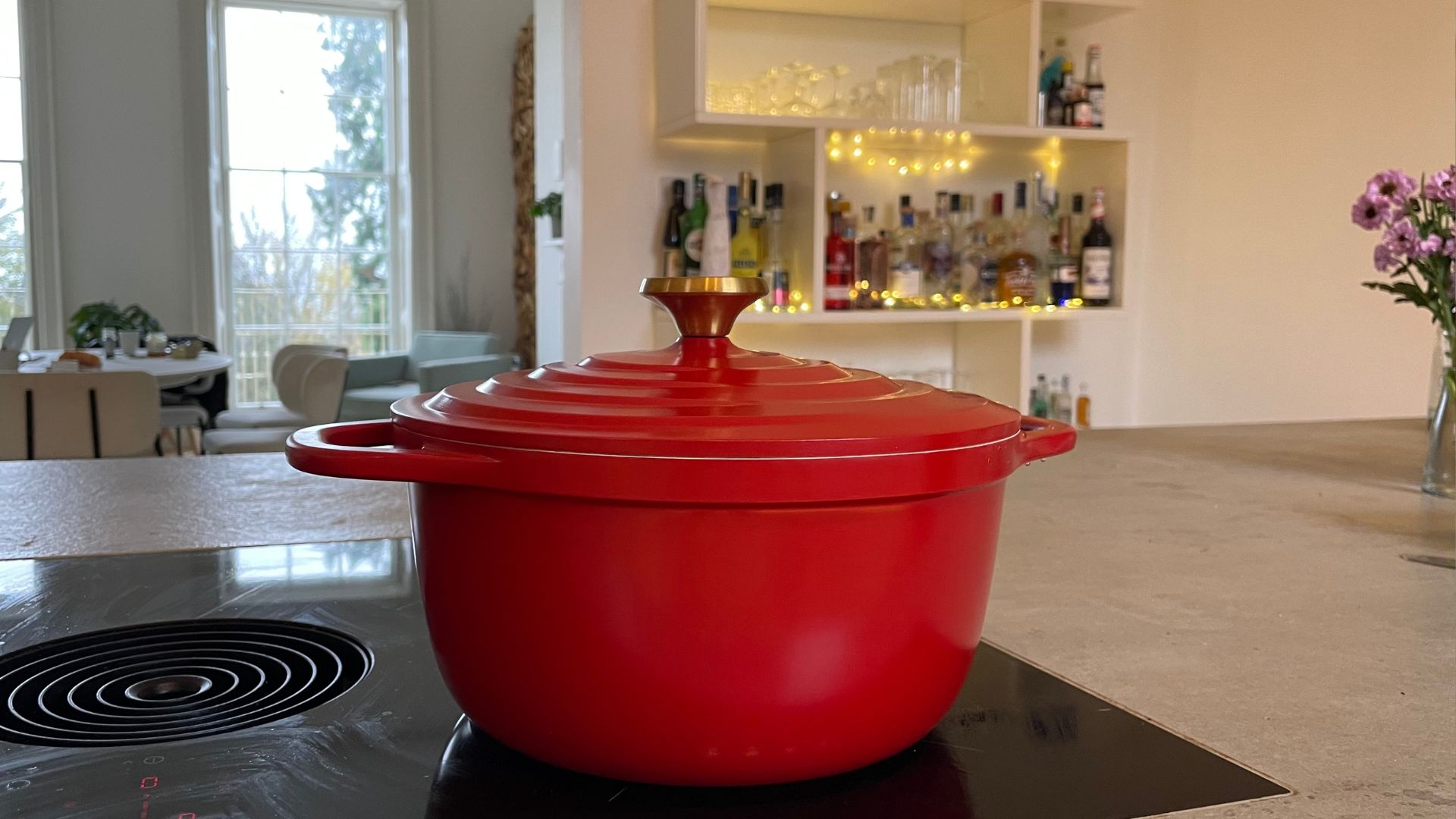
Casserole dishes, also known as Dutch ovens, are versatile pieces of kit. You can cook soups, stews, sauces, and bread in yours, as long as you're smart about the investment that you make. Whilst Le Creuset is expensive, it's crafted from cast iron and enamel, which makes it uniquely robust and non-stick. The Salter set that I've chosen as a budget option is a little thinner at the edges, but puts up tough competition for Le Creuset. And finally, the Tefal Air is cast aluminium, which is lighter and quicker to heat up, it is a little less robust than cast iron.
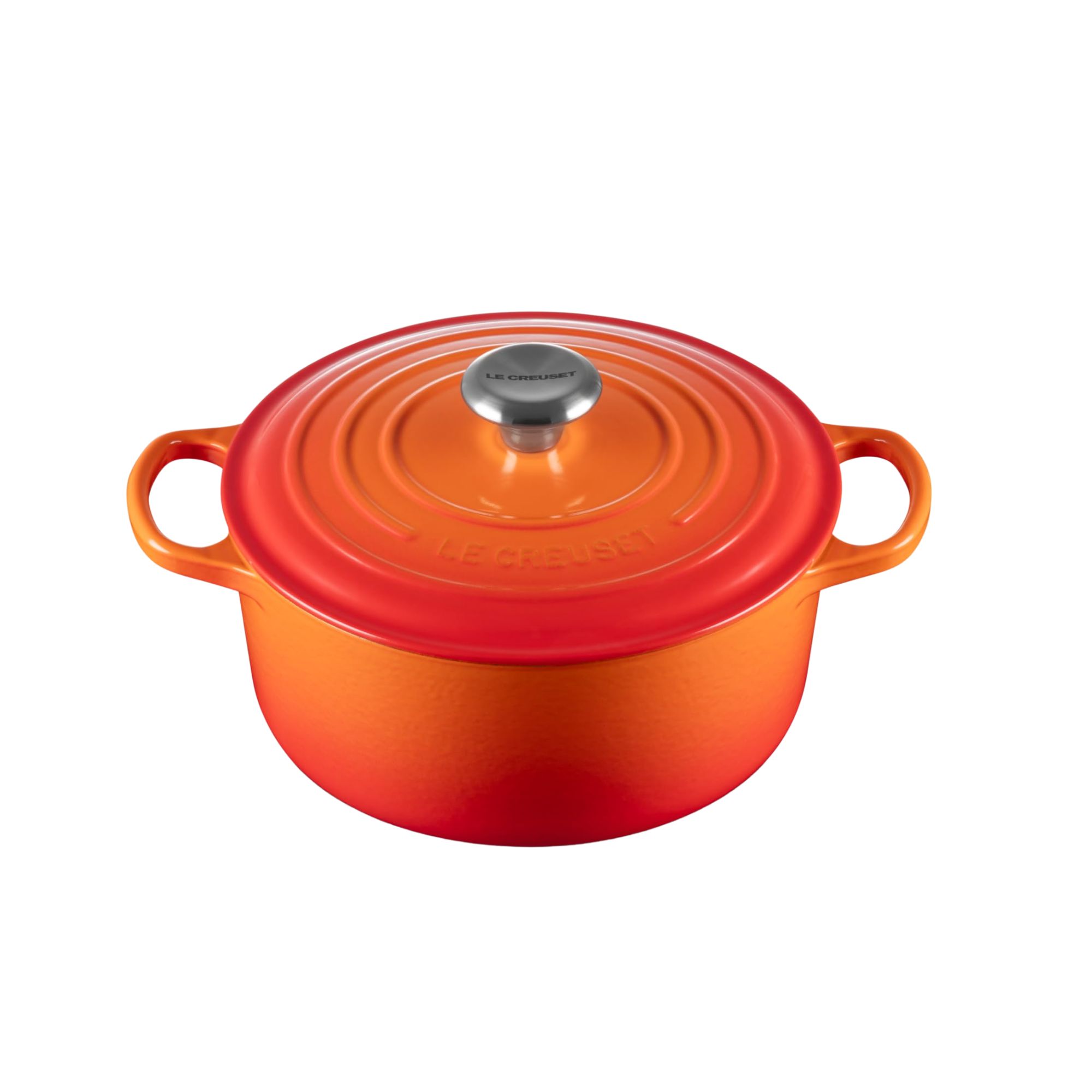
Sometimes, you can’t beat a classic. With 100 years of French cooking baked into their robust bodies, it’s hard not to love Le Creuset and their vast array of colourways. When you buy one, you know it’s going to be the only casserole dish you ever need. There’s no such thing as a Le Creuset that’s seen better days.
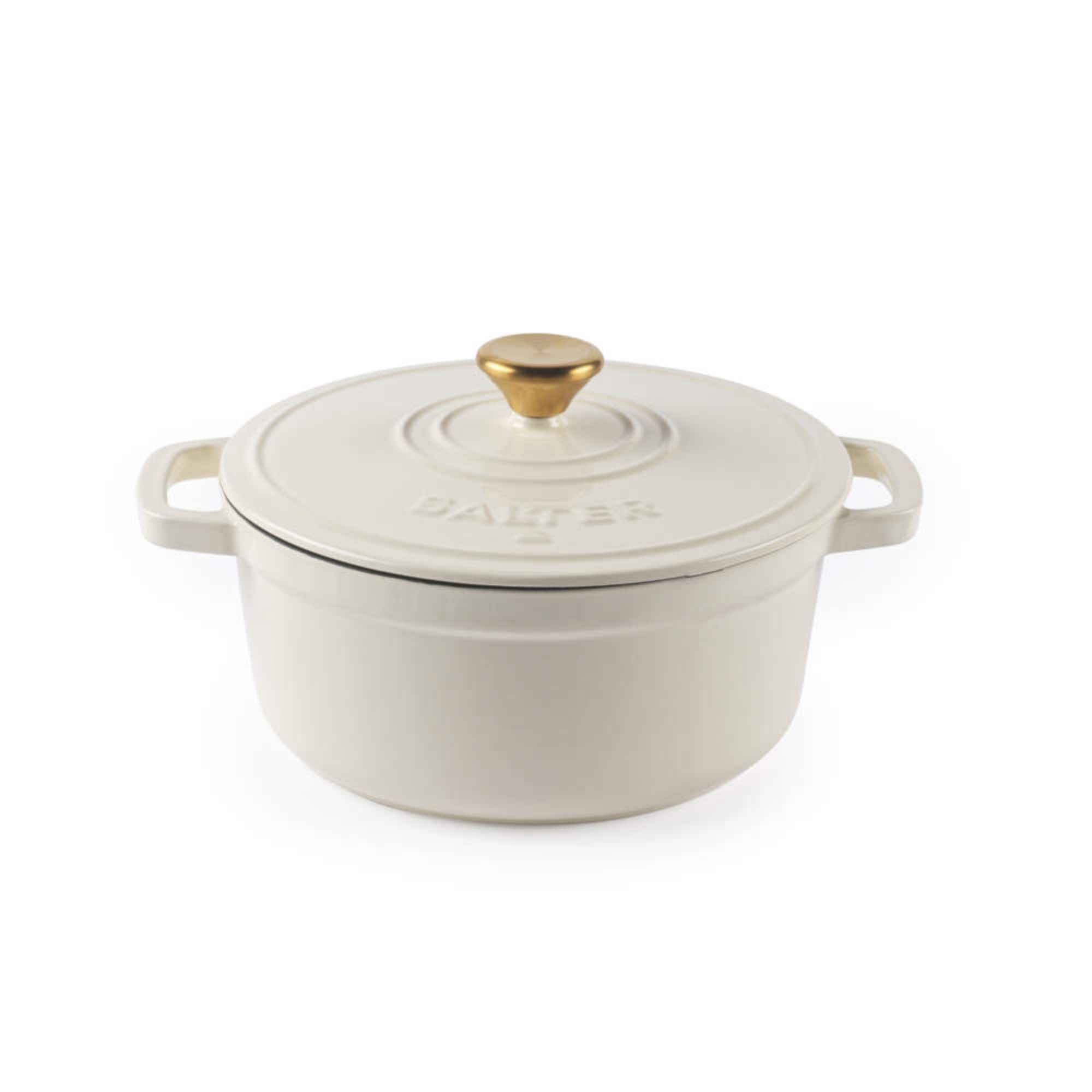
It was love at first sight when I tested these. Available in a range of colourways, I have a soft spot for the cream. They’re high performance, completely non-toxic, and guaranteed for life. When you look at the price tag, it’ll be hard to justify any competitors.
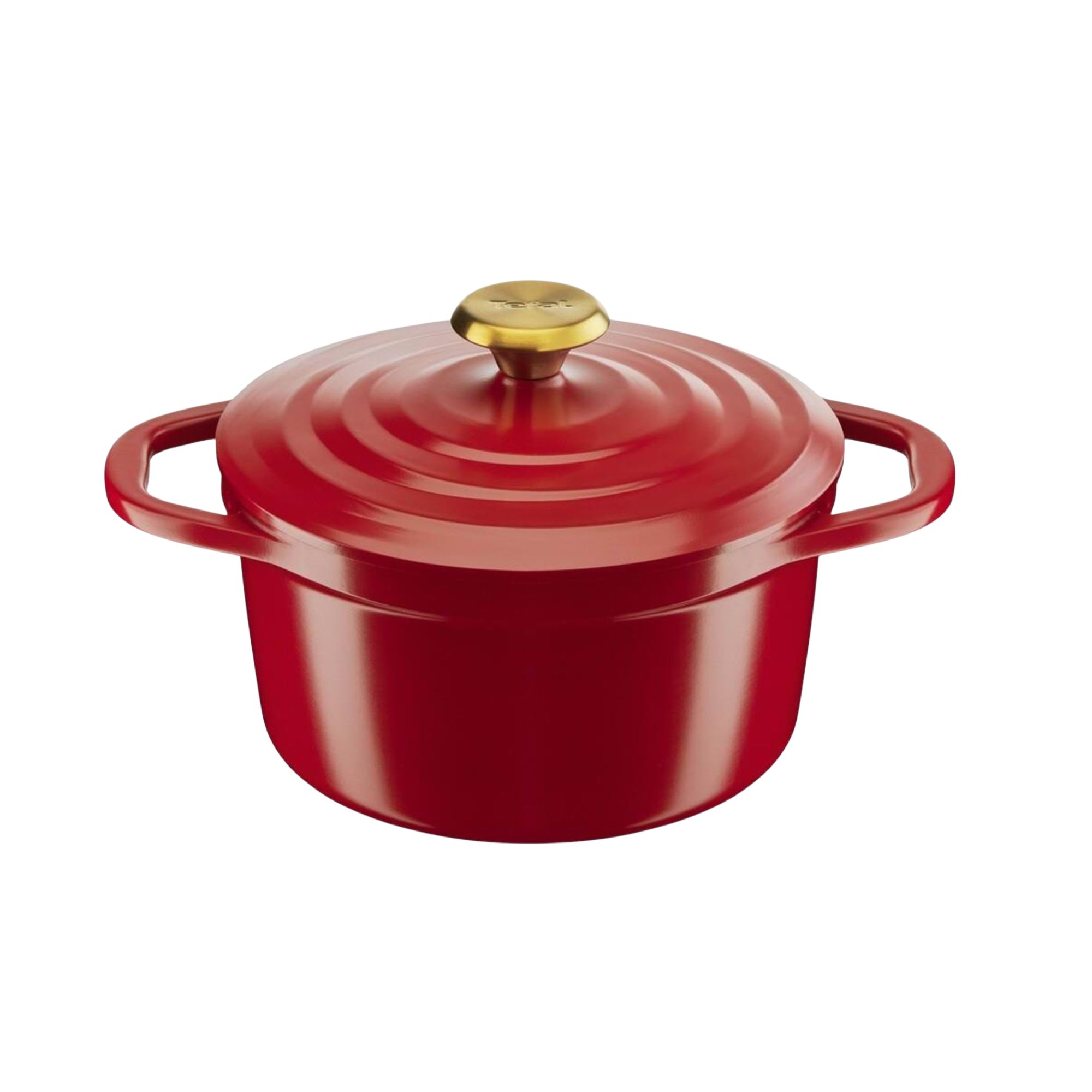
This is cast aluminium, which, in a buying guide for cast iron sounds like cheating, but it feels like you’re dreaming when you use it. Light as a feather and as robust as any other dishes on this list, it’s the one to go for if you’re after something that’s a little easier on the wrists.
The best classic cast iron casserole dish
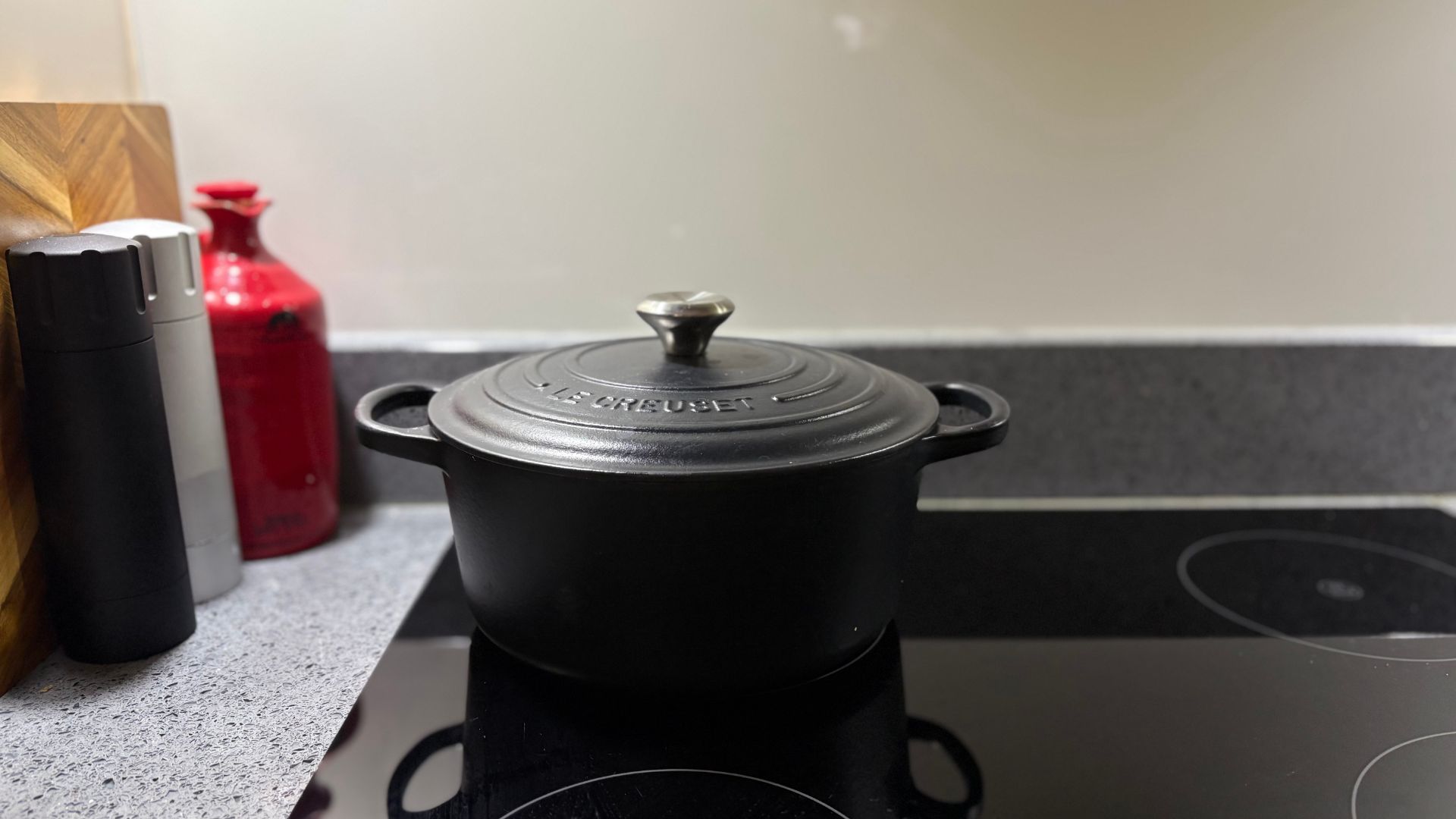
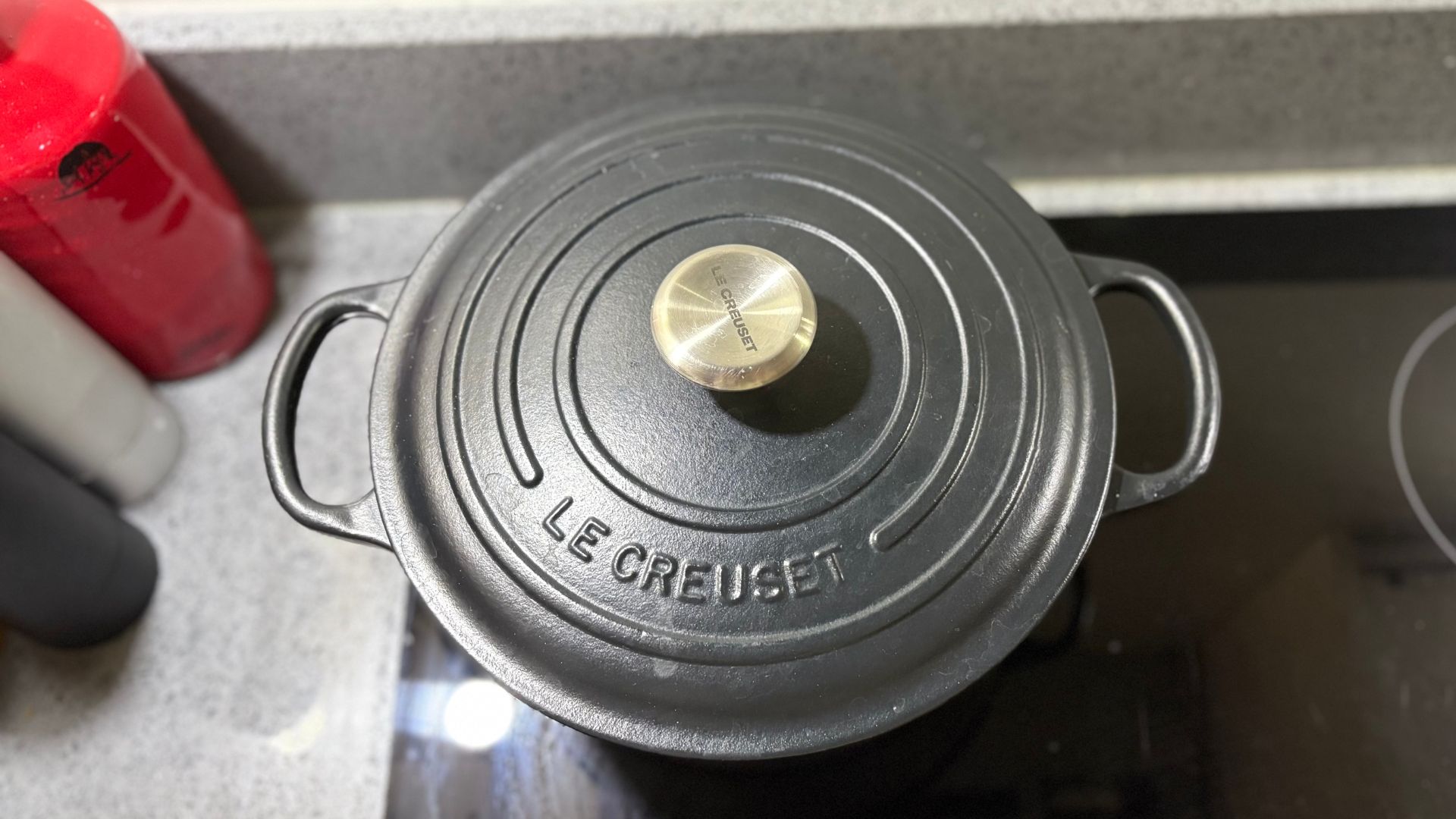
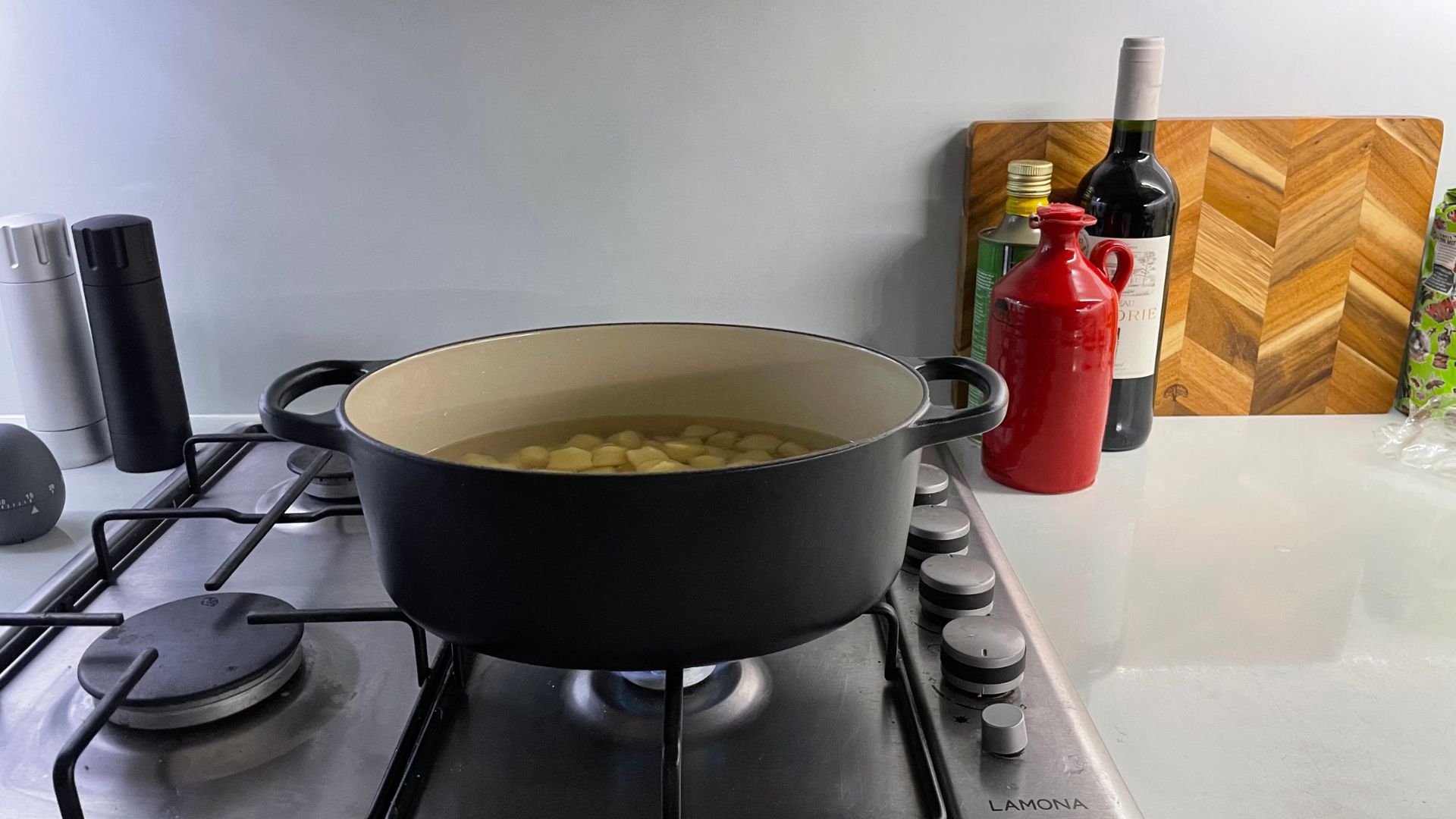
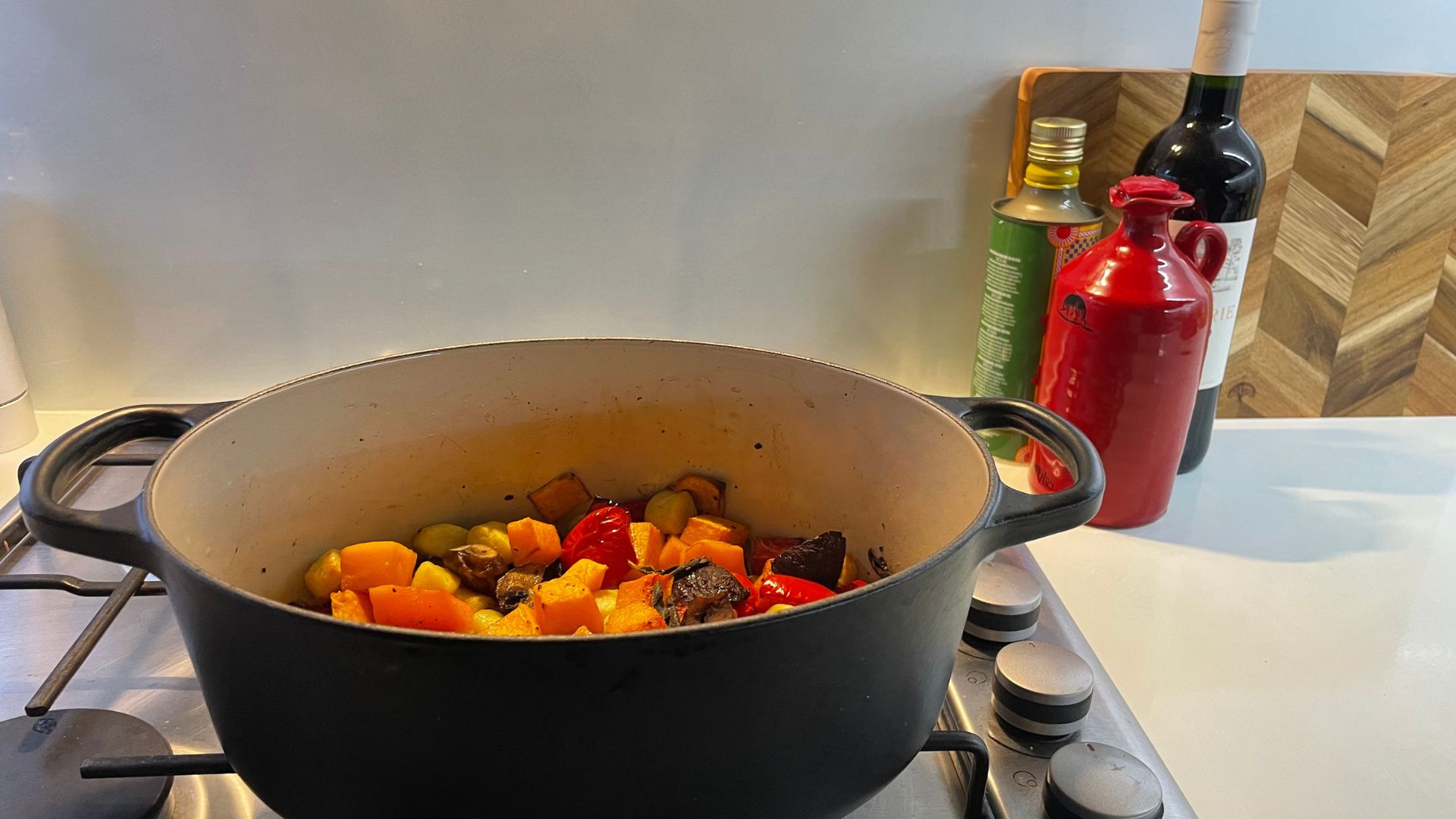
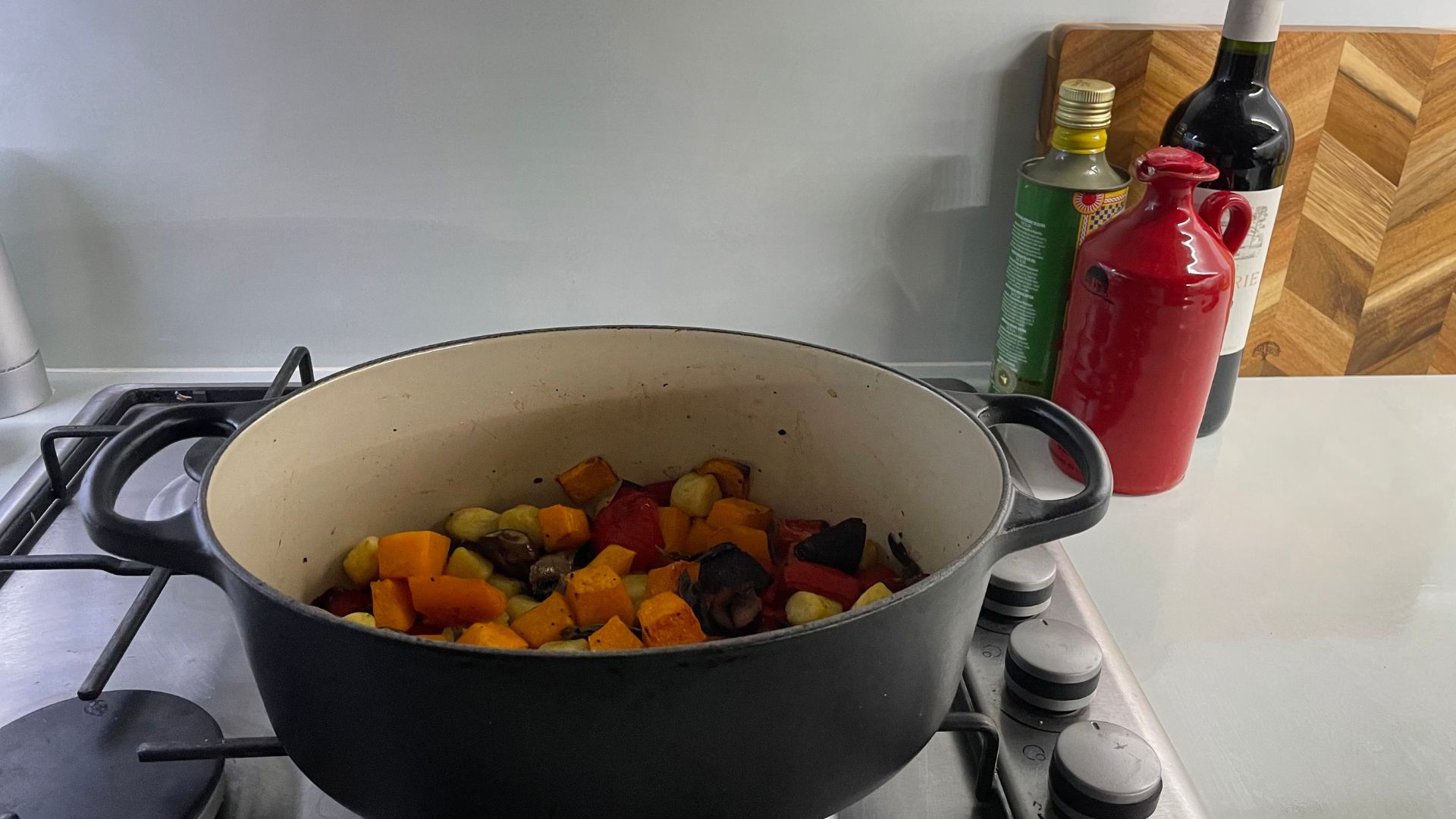
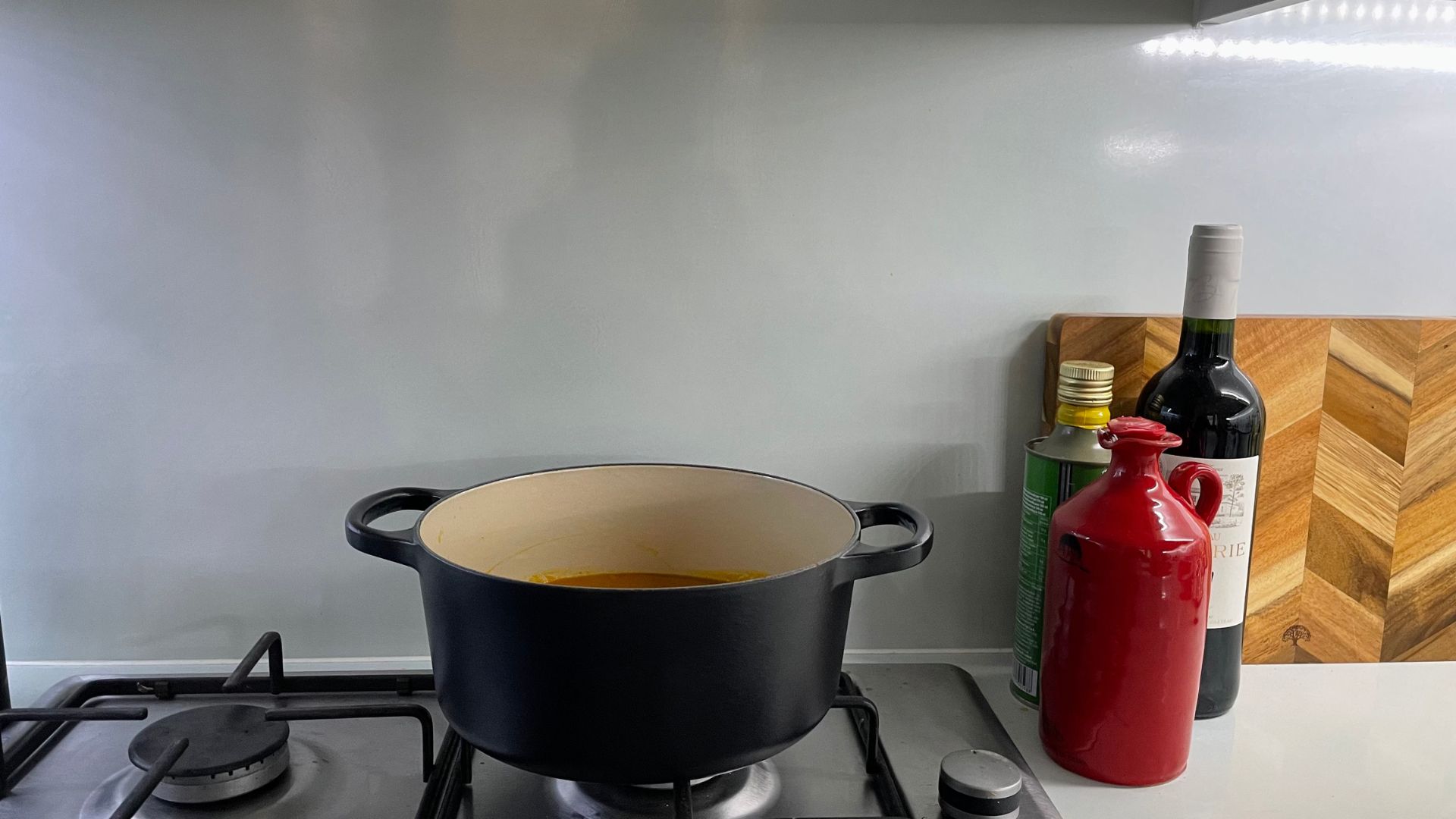
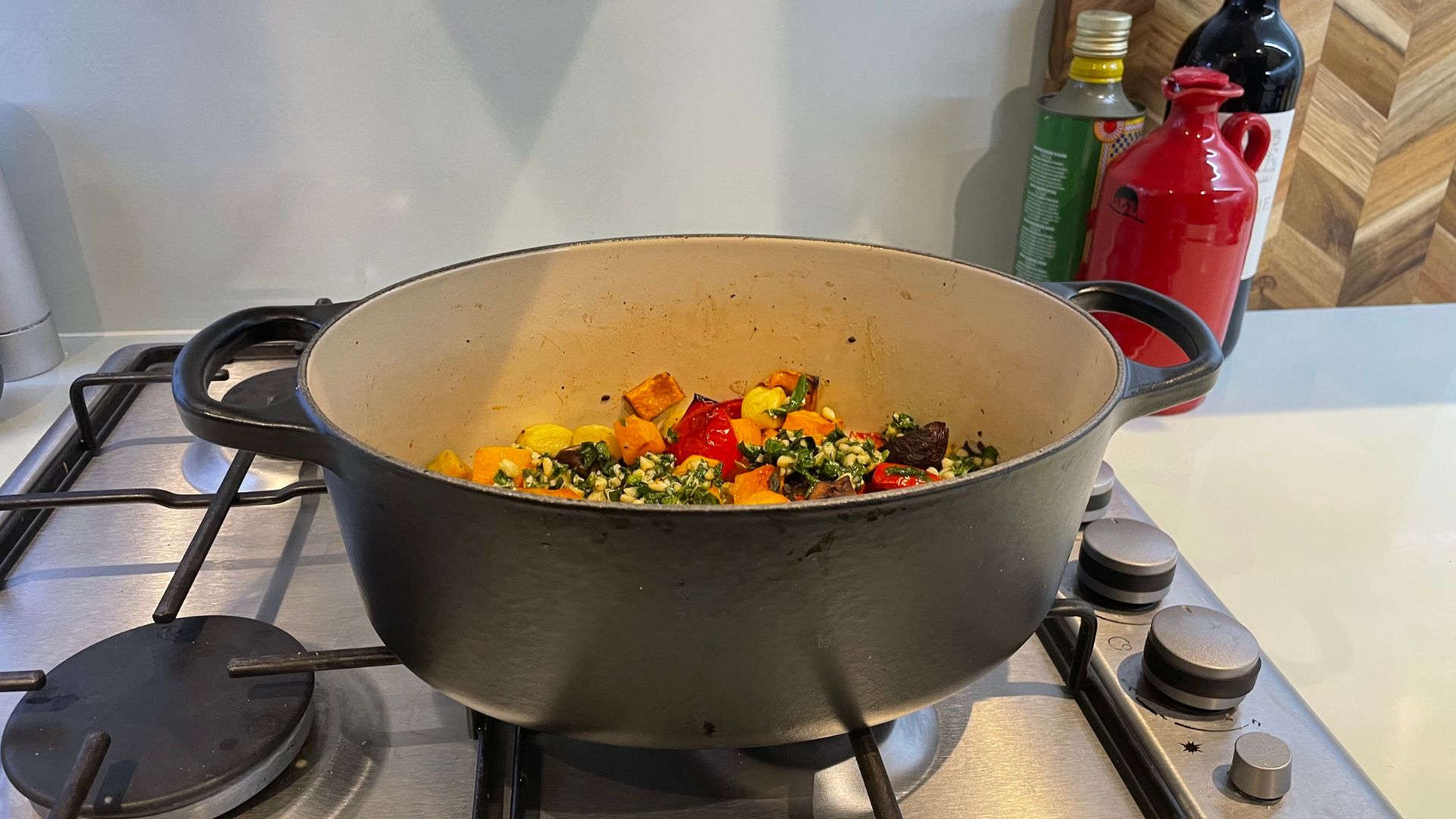
Specifications
Reasons to buy
Reasons to avoid
The one-stop pot that defines Dutch oven royalty
Le Creuset’s iconic Round Casserole is the gold standard of cast iron cookware, and for good reason. Made in France and available in over 20 stunning colours and a wide range of sizes (from 1.8L to 8.1L), this casserole dish is as versatile as it is beautiful. It’s the stew pot that all others aspire to be and it comes with a lifetime guarantee that genuinely holds up. Many, including mine, are passed down through generations as true kitchen heirlooms.
The elephant in any Le Creuset-filled kitchen is the price of these pots and pans. Yes, Le Creuset does come up on the pricy side, but I genuinely believe they're worth the money. As a classic cast iron, it warms up evenly, holds heat incredibly well, and the light enamel interior makes cleaning easy and resists staining. Even better, the tight-fitting lid locks in moisture for perfectly tender stews, slow-cooked meats, or even homemade sourdough. I reach for it at the beginning of the weekend and it'll be working hard while I'm off-duty.
Then, when it comes to those final flourishes flourishes, each Le Creuset Casserole Dish features a heat-resistant knob (which you can swap for one of Le Creuset’s more creative designs) and large handles that make it easy to lift, even when full.
My one piece of advice is to shop around. In my kitchen, it's all Le Creuset pans. That's not a brag, it's a result of decades of thrifting, shopping Le Creuset sales, and looking for a good deal. The reason I go to all that effort for Le Creuset is that it really perfects both form and function.
You can find out more in my full review.
The best budget cast iron casserole dish
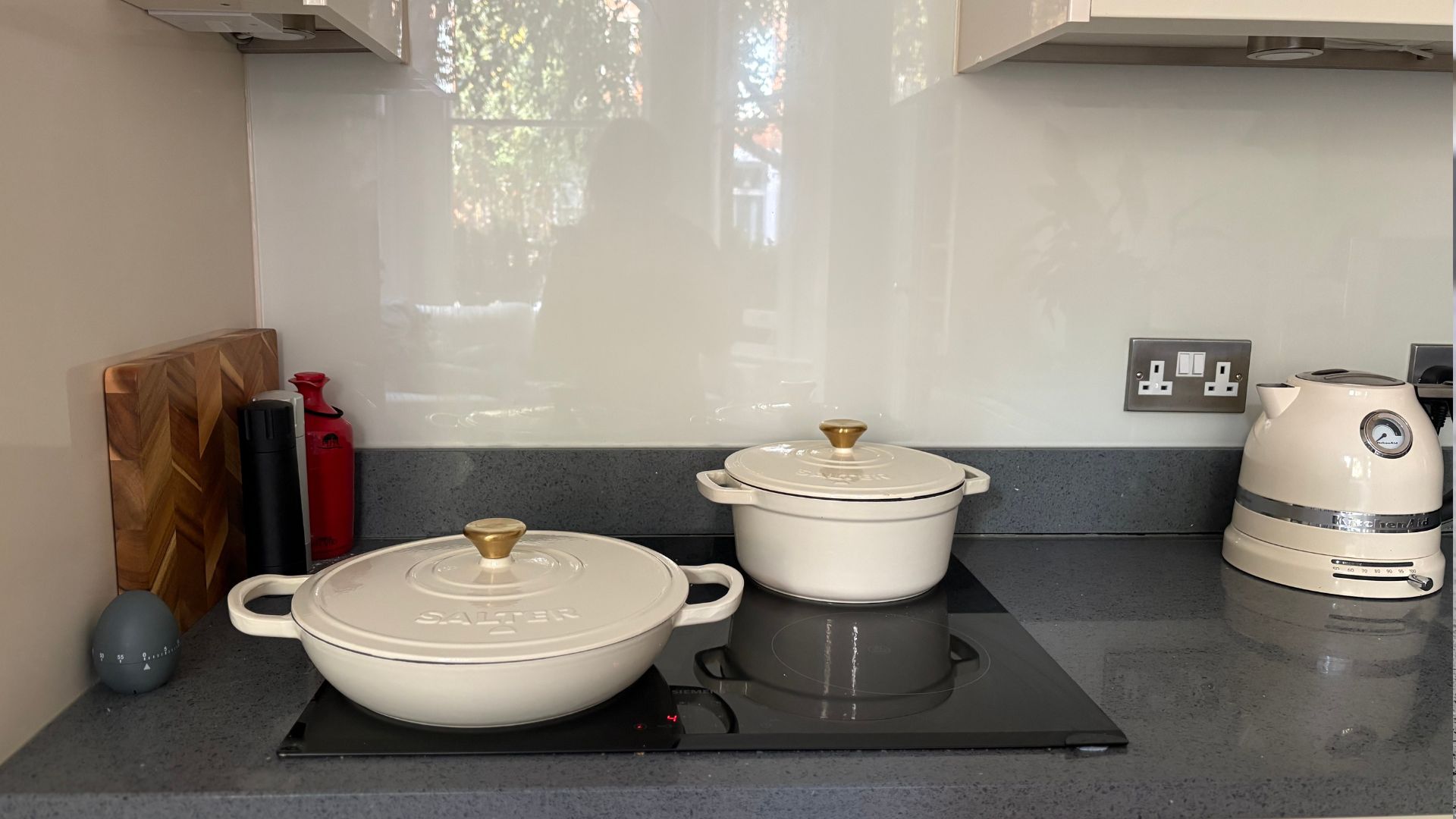
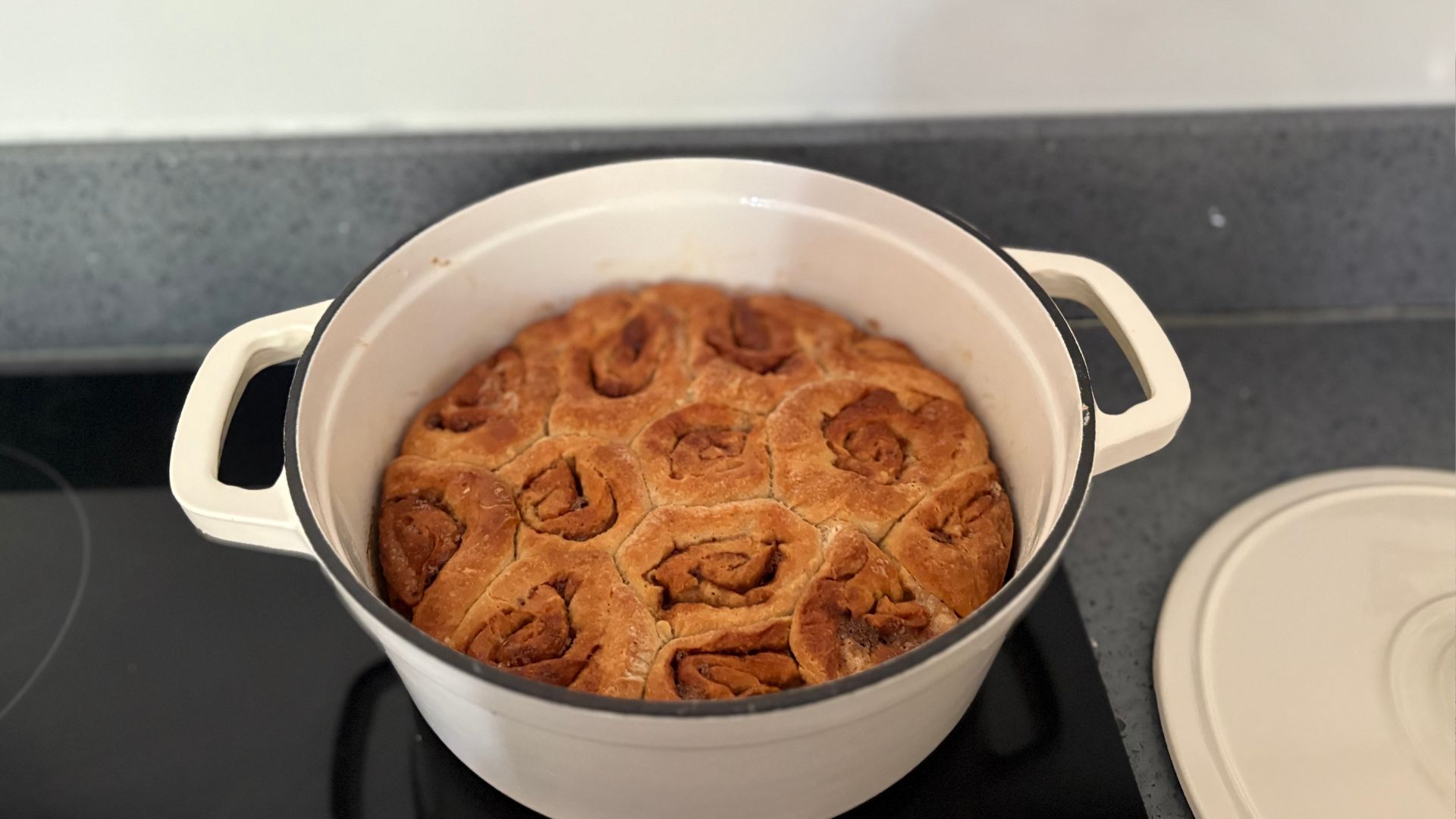
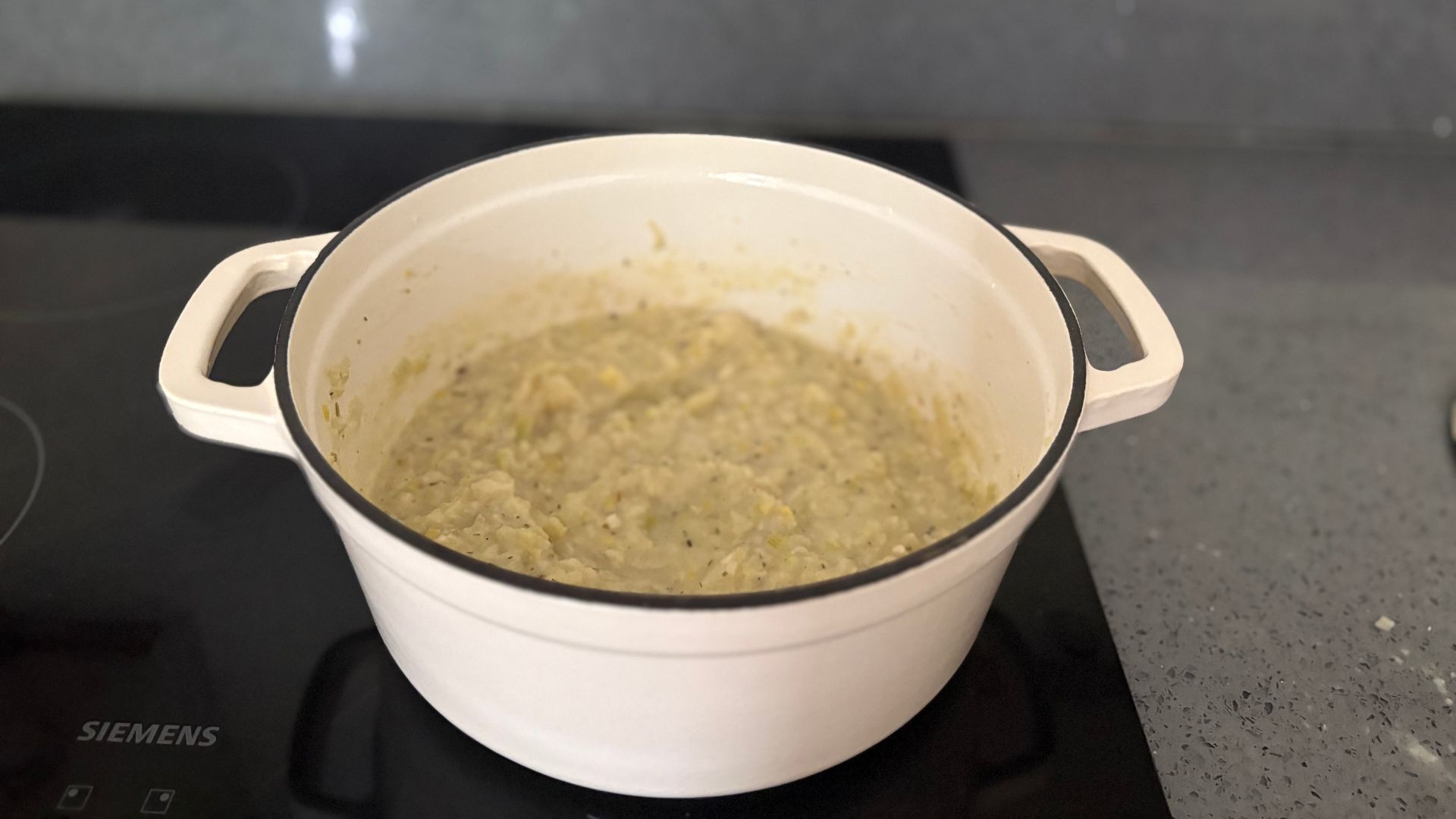
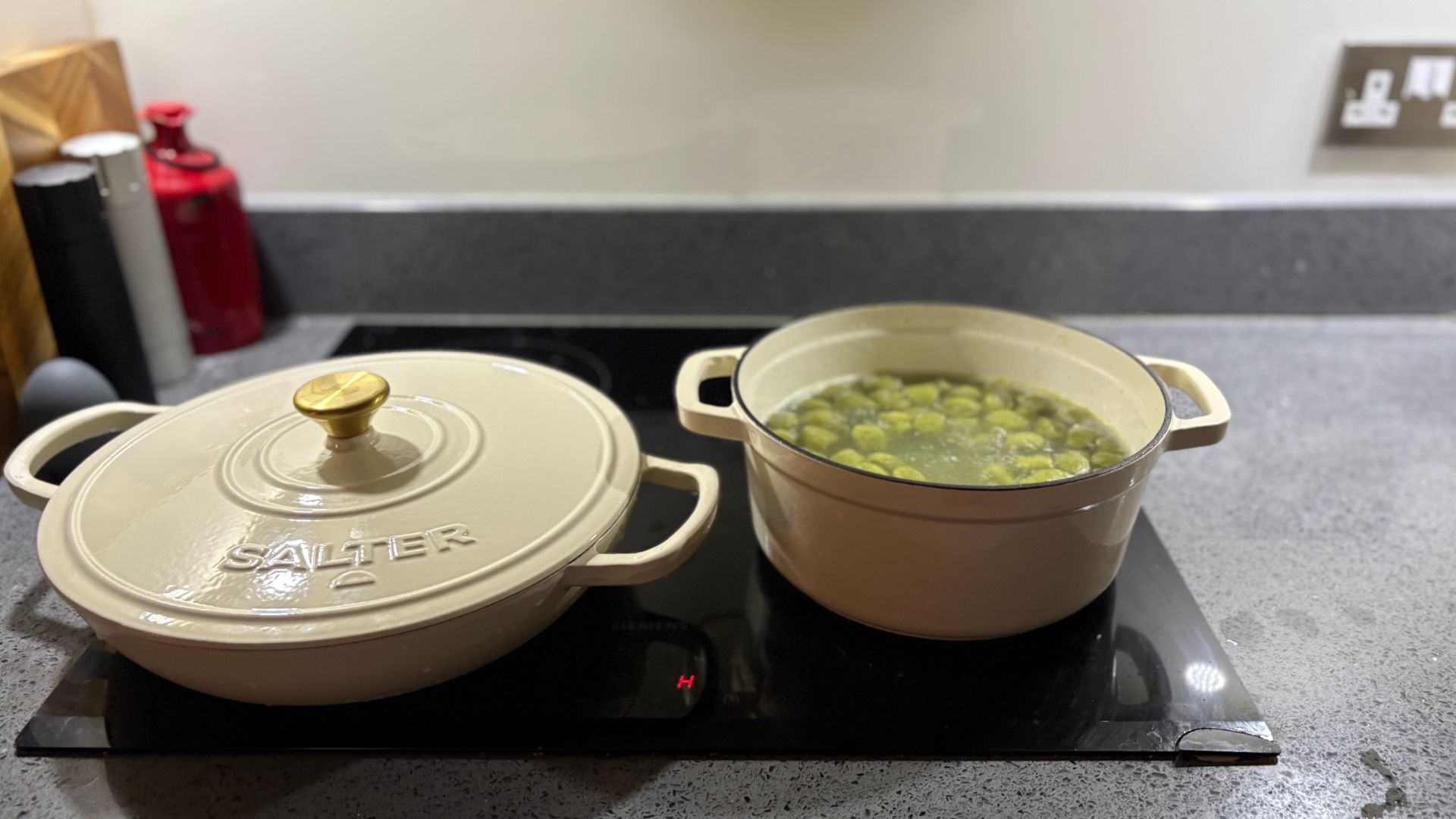
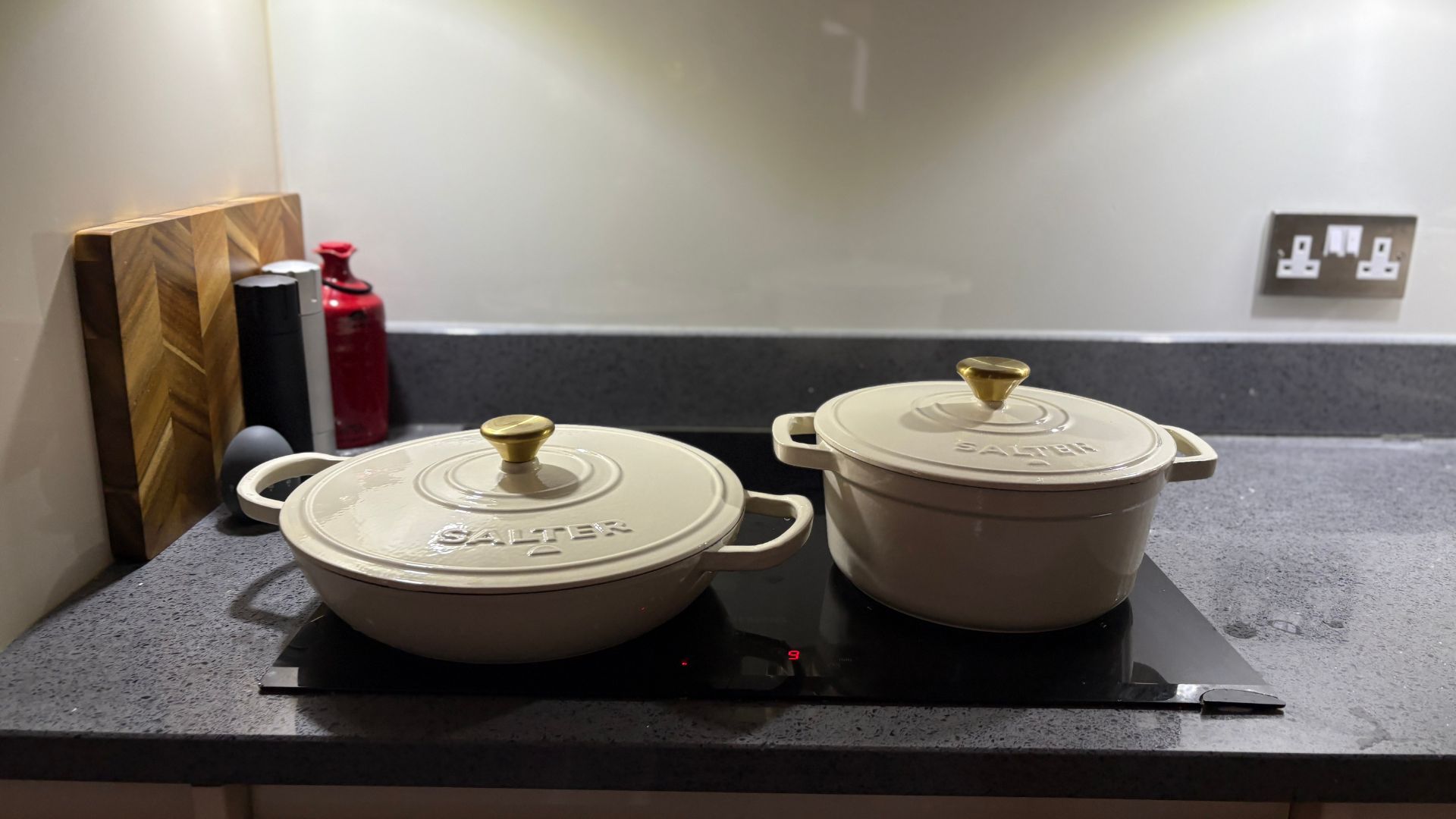
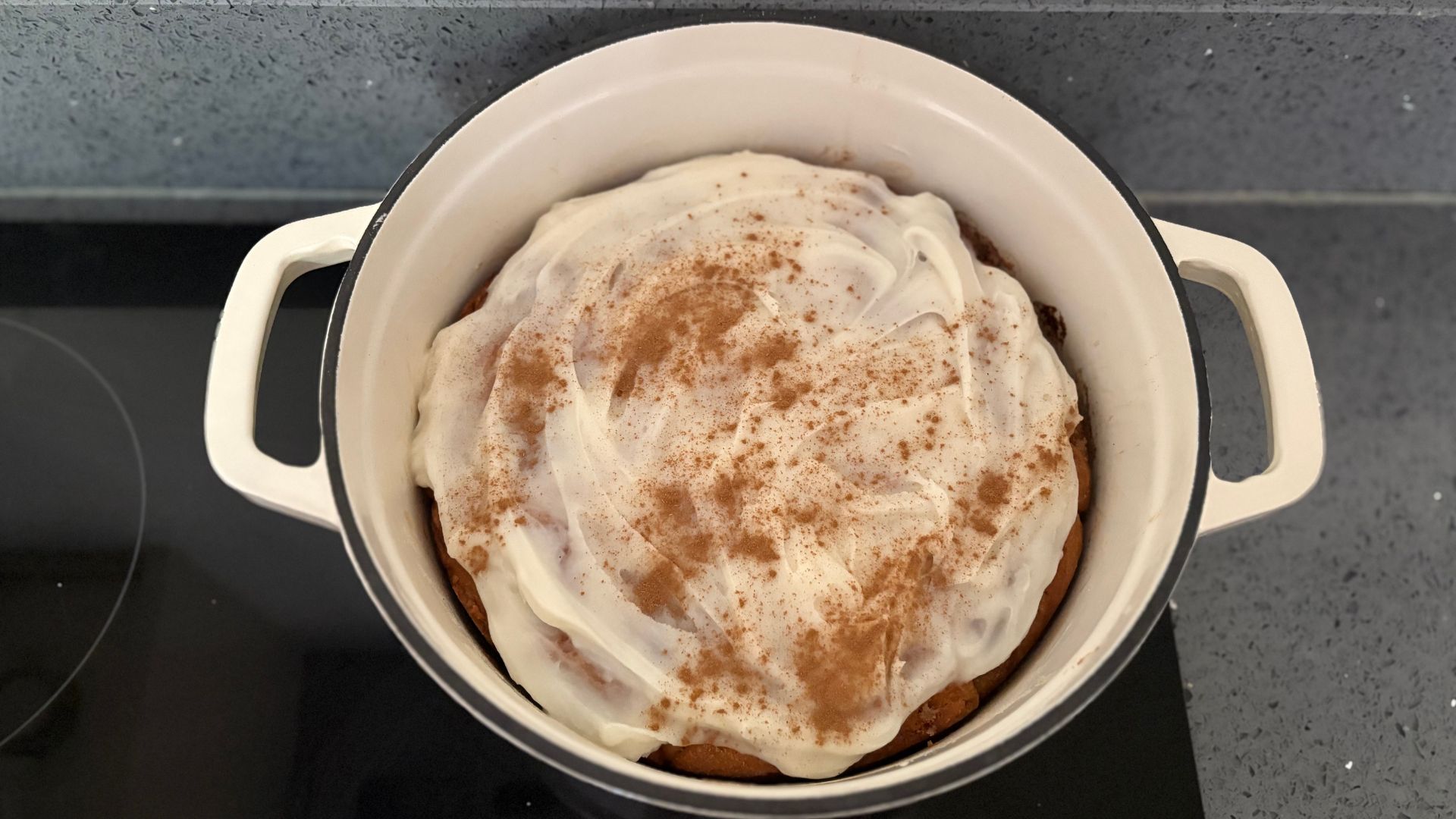
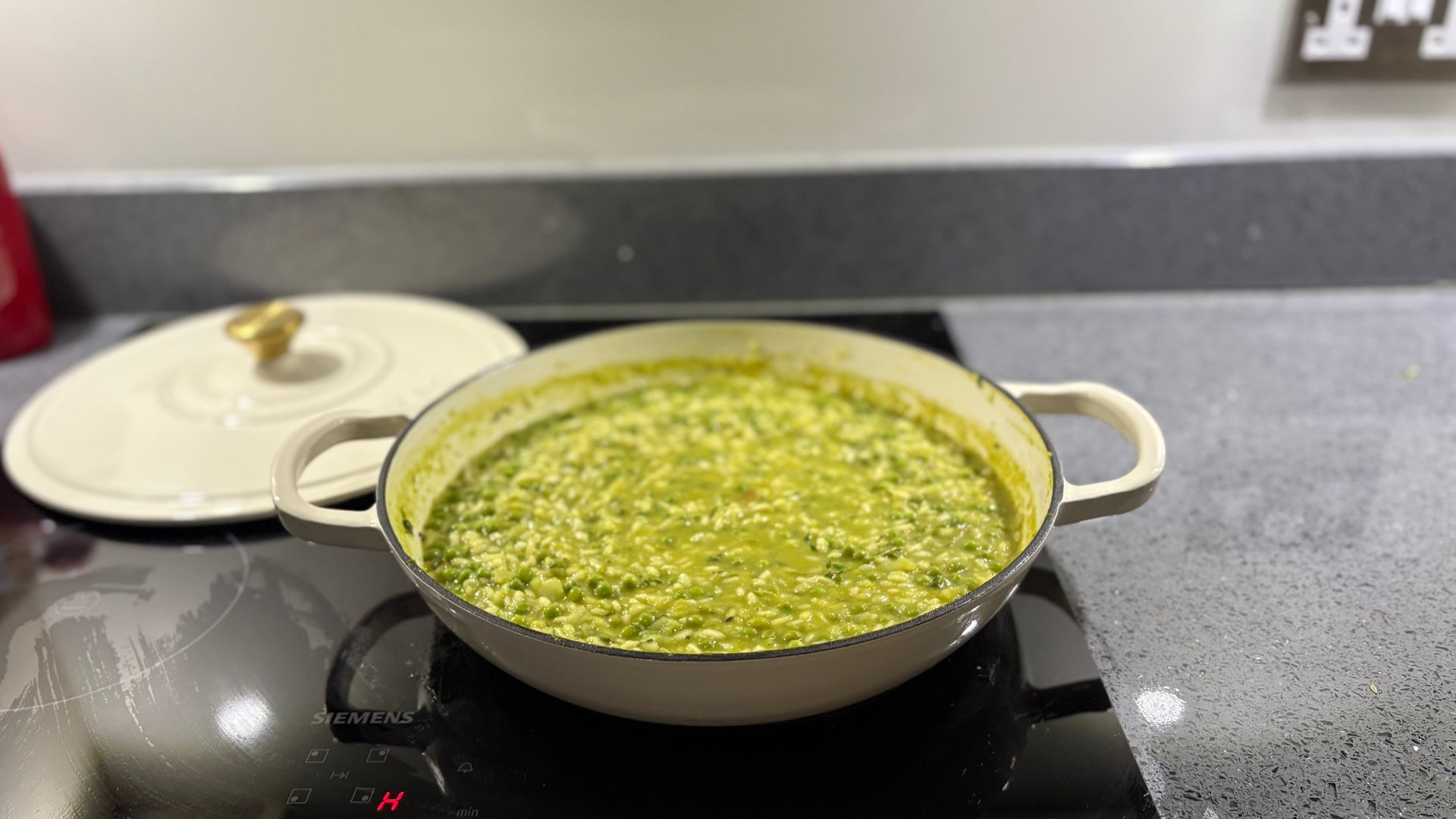
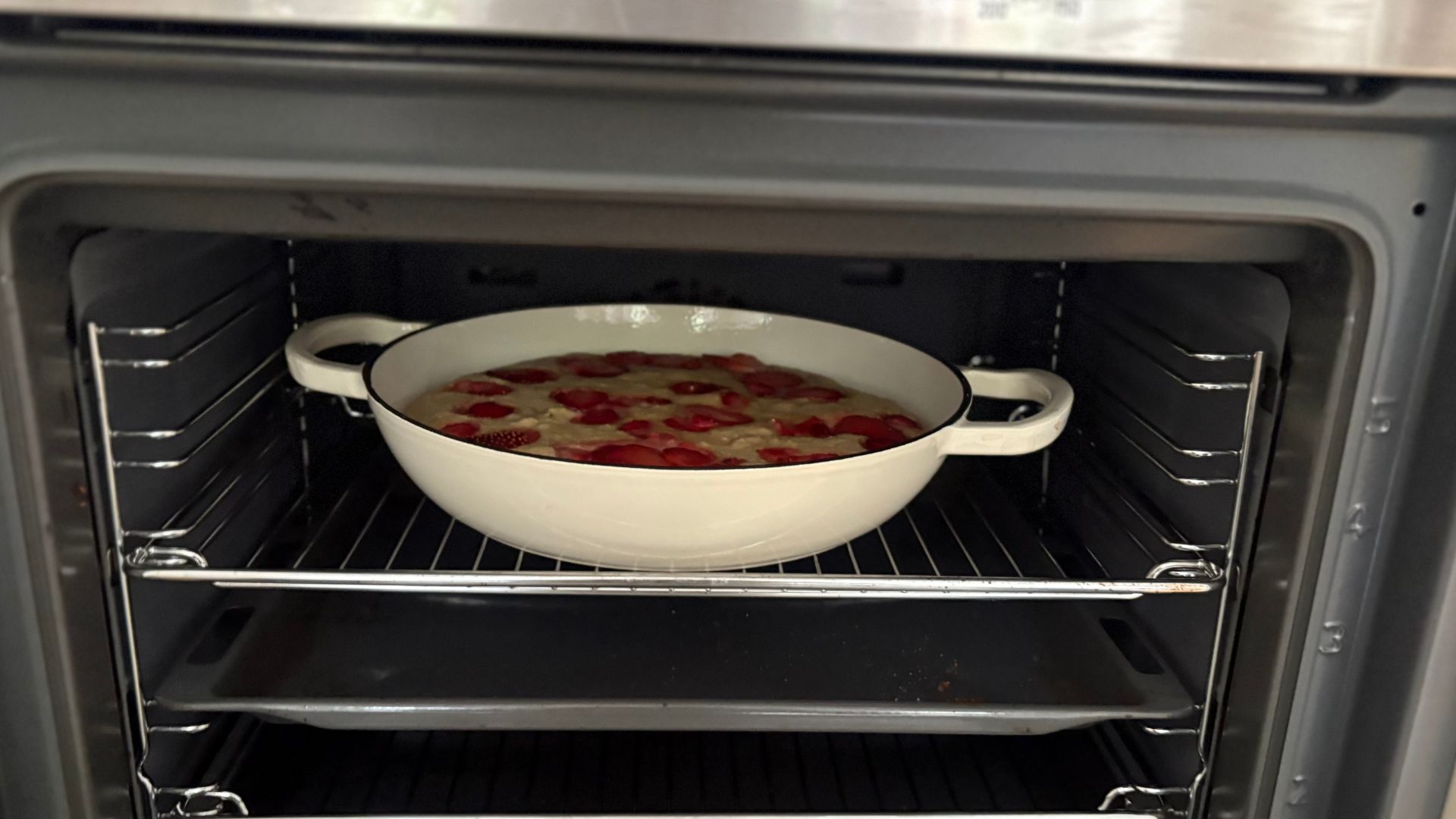
Specifications
Reasons to buy
Reasons to avoid
The glossy casserole dish that's worthy of your wish list
Cast iron often comes with a premium price tag, but Salter proves that quality doesn’t have to cost the earth. The Salter Chester Cast Iron Casserole Dish offers Le Creuset-level performance at a fraction of the price, making it the ideal choice for home cooks who want all the benefits of cast iron without the hefty investment.
I tested both the shallow and round Chester casserole dishes (sold separately or together), and was seriously impressed. From slow-cooked stews to risottos, cakes, and other delicious bakes, they delivered exceptional heat retention and even cooking throughout. The moisture-locking, self-basting lid keeps dishes tender, juicy, and full of flavour, a feature usually reserved for more expensive designs.
Just like Le Creuset, Salter backs up its craftsmanship with a lifetime guarantee, meaning this is a piece you can confidently hand down through generations. Its enamel-coated interior is durable and easy to clean, while the PFAS-free, glossy finish gives it a stylish, premium feel. Both oven- and hob-safe, it’s a reliable multitasker that looks as good on the table as it performs in the kitchen.
With all that in mind, you'll likely be wondering why anyone would go for a Le Creuset? The only difference I noticed was that this is a little thinner, so might be more prone to denting or damaging. Beyond that, it's hard to love anything else more than these.
You can find out more in my full review.
The best lightweight cast iron casserole dish

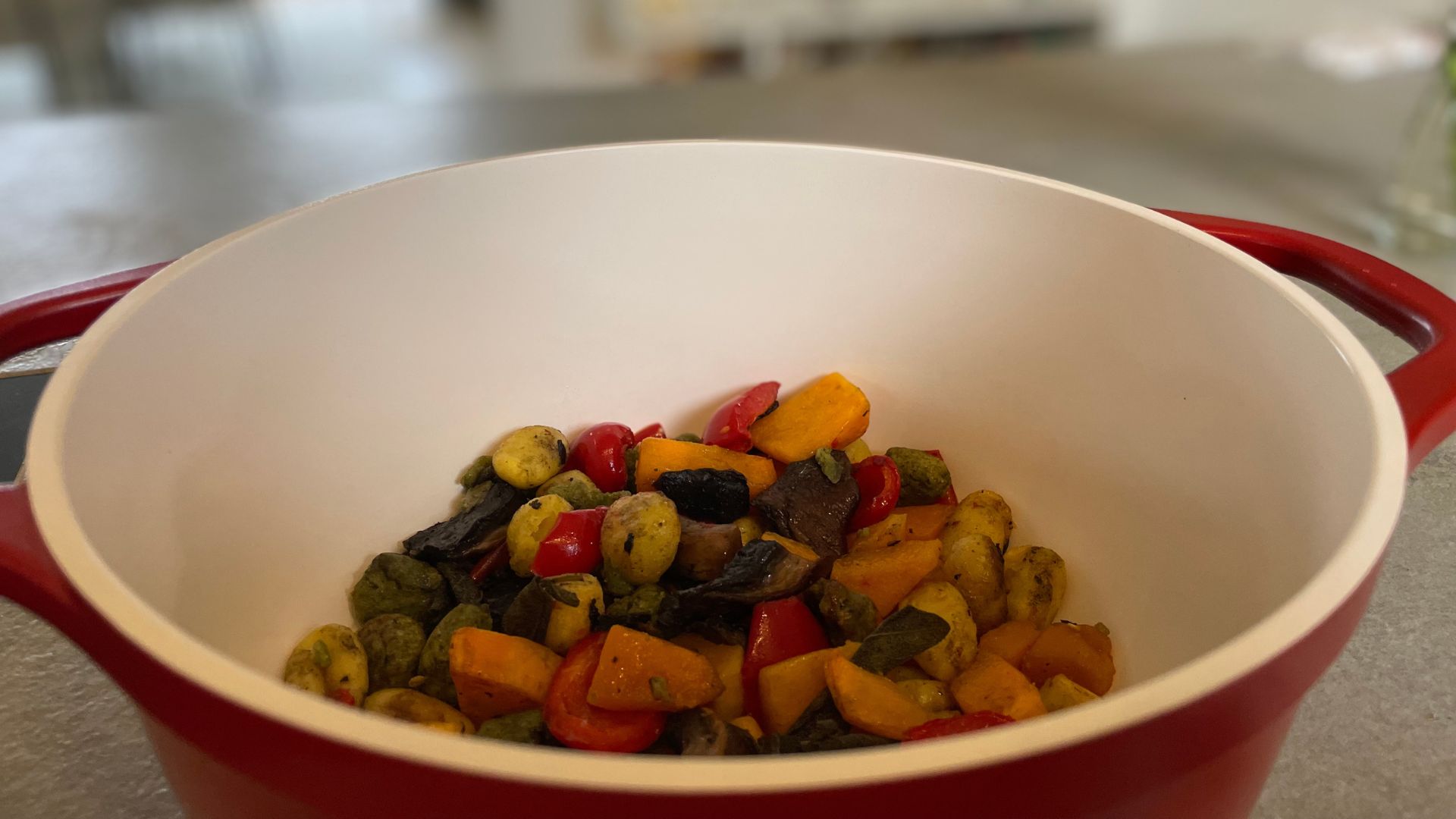
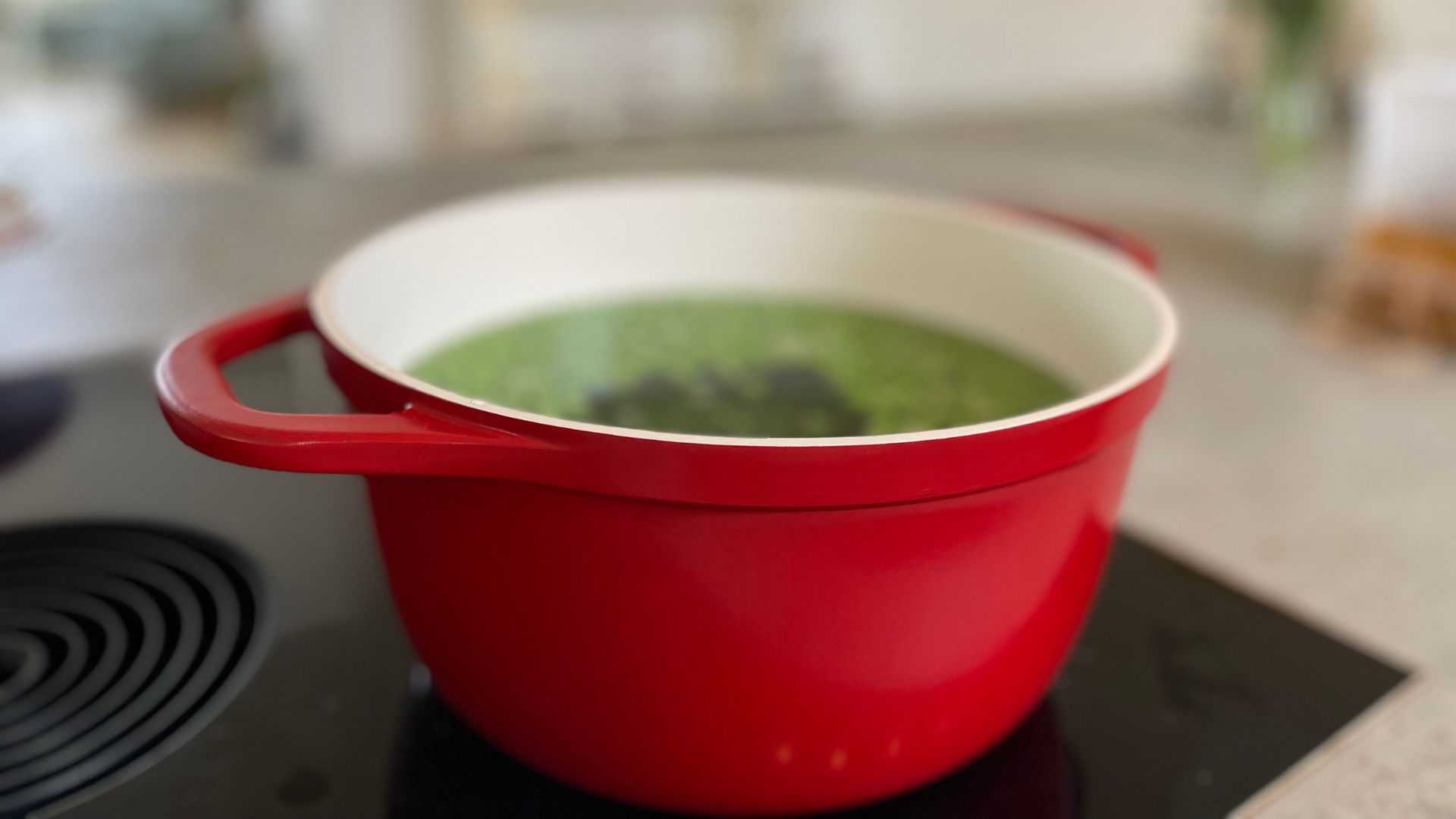
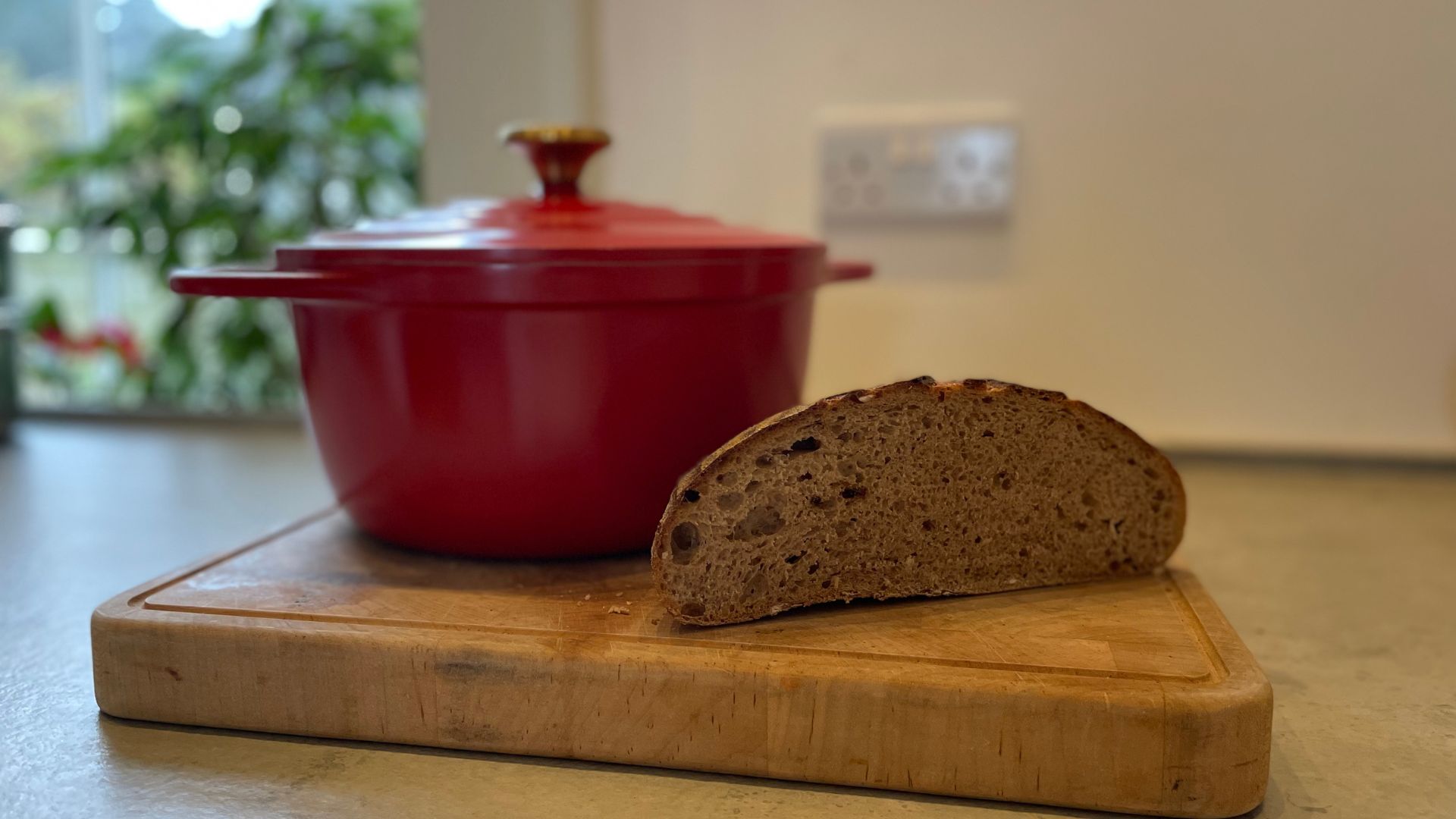
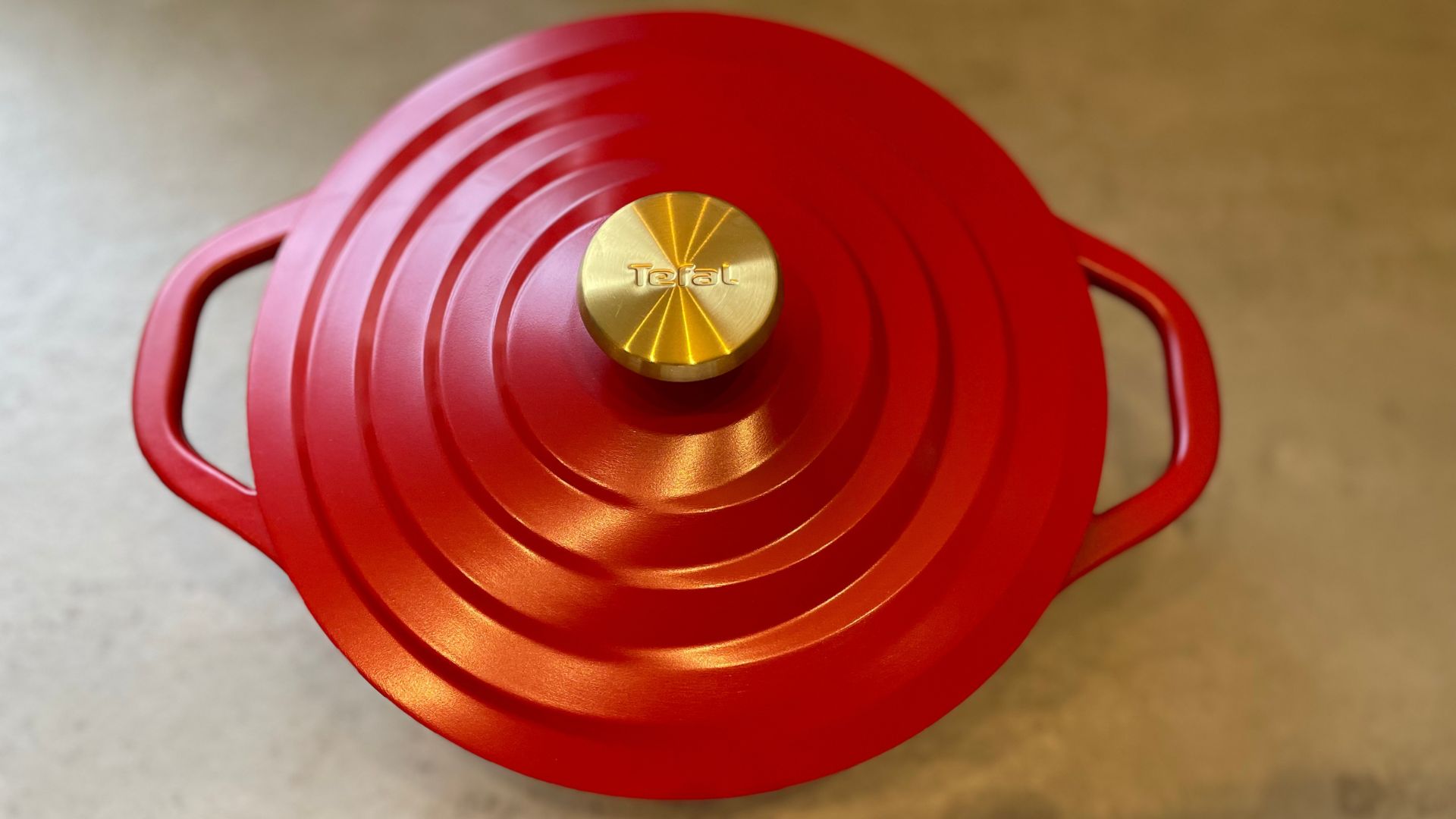
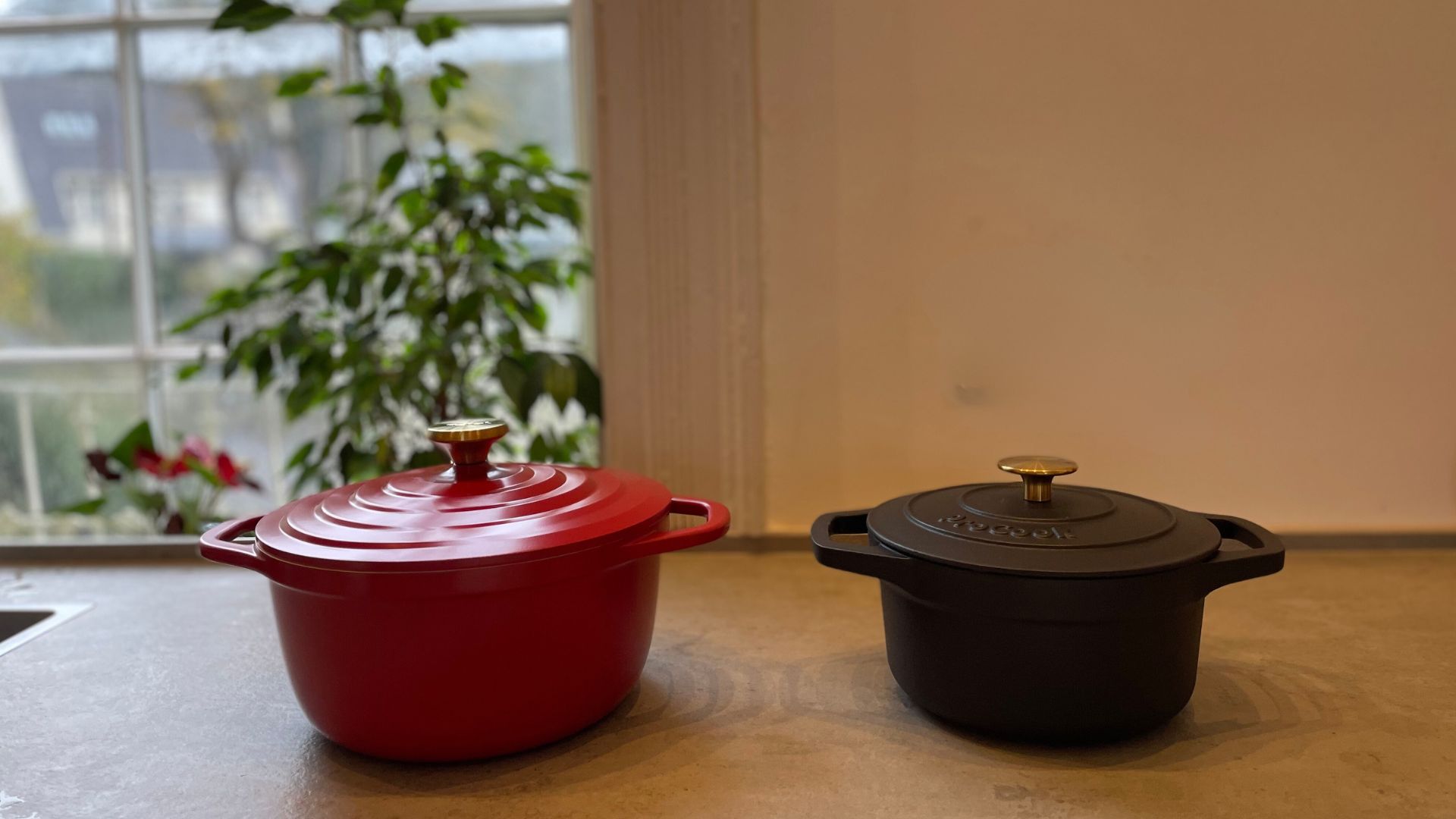
Specifications
Reasons to buy
Reasons to avoid
The lightweight wonder that still means business
Watch this space: cast aluminium is fast becoming the next big thing in kitchenware. With the same robust construction and even heat distribution as traditional cast iron, but at a fraction of the weight, it’s a game-changer for anyone who finds lifting a heavy pot full of stew or bread dough a struggle.
The Tefal Air Cast Aluminium Stewpot takes top spot against all other cast aluminium casserole dishes thanks to its outstanding performance in testing. It’s three times lighter than cast iron, yet it delivers the same reliable, even heat transfer. The ceramic non-stick lining is completely non-toxic and impressively durable. In fact, even when I tried to burn a curry onto the bottom, it simply wouldn’t stick.
This stewpot is oven-safe, too, and I used it to bake one of my best sourdough loaves yet. The combination of its even heat retention and moisture-locking lid creates the perfect steamy environment for crisp crusts and fluffy interiors. It’s a true multitasker that proves you don’t have to sacrifice performance for practicality.
You can find out more in my full Tefal Air Cast Aluminium Stewpot review.
The ones that just missed the list
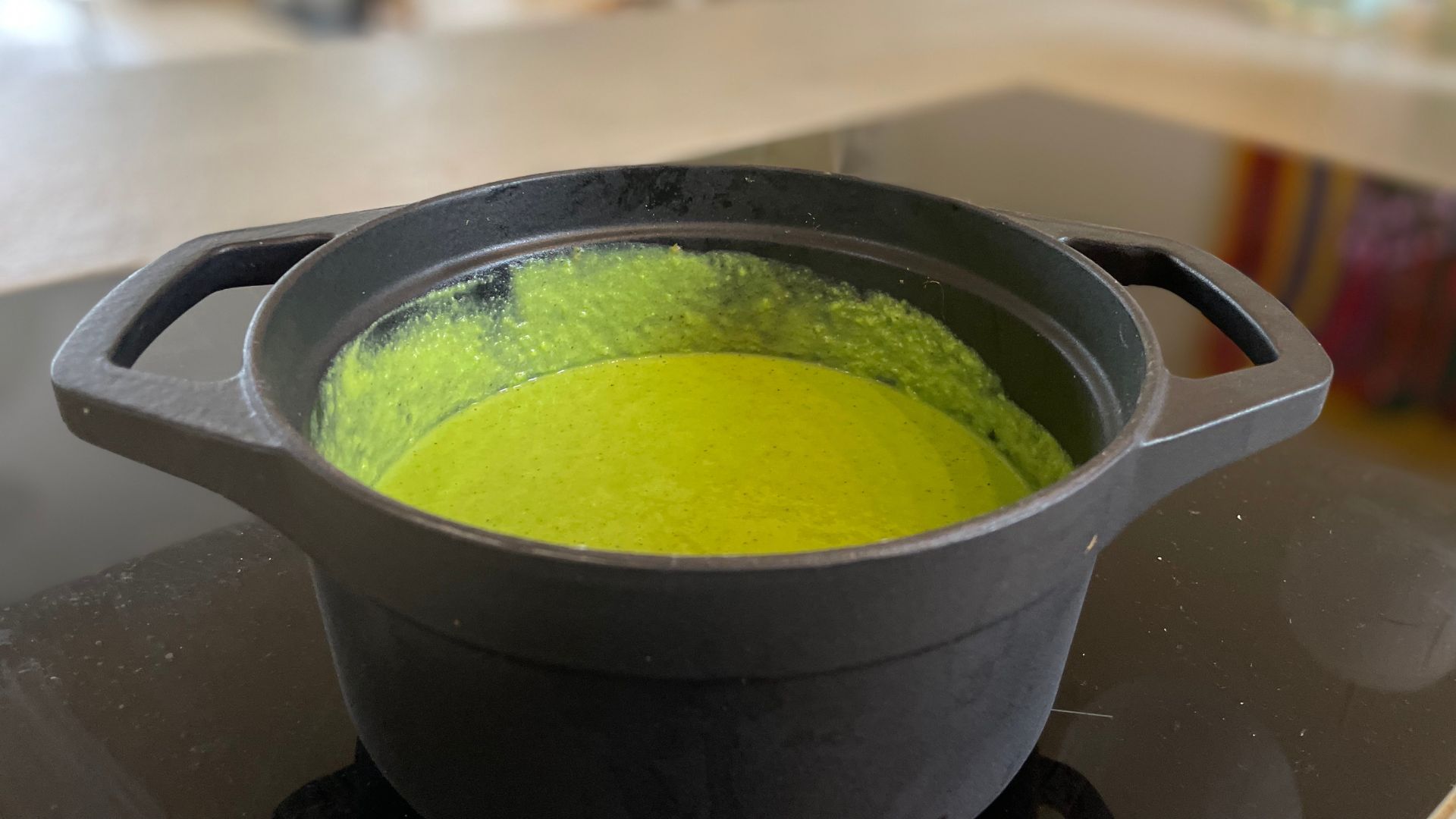
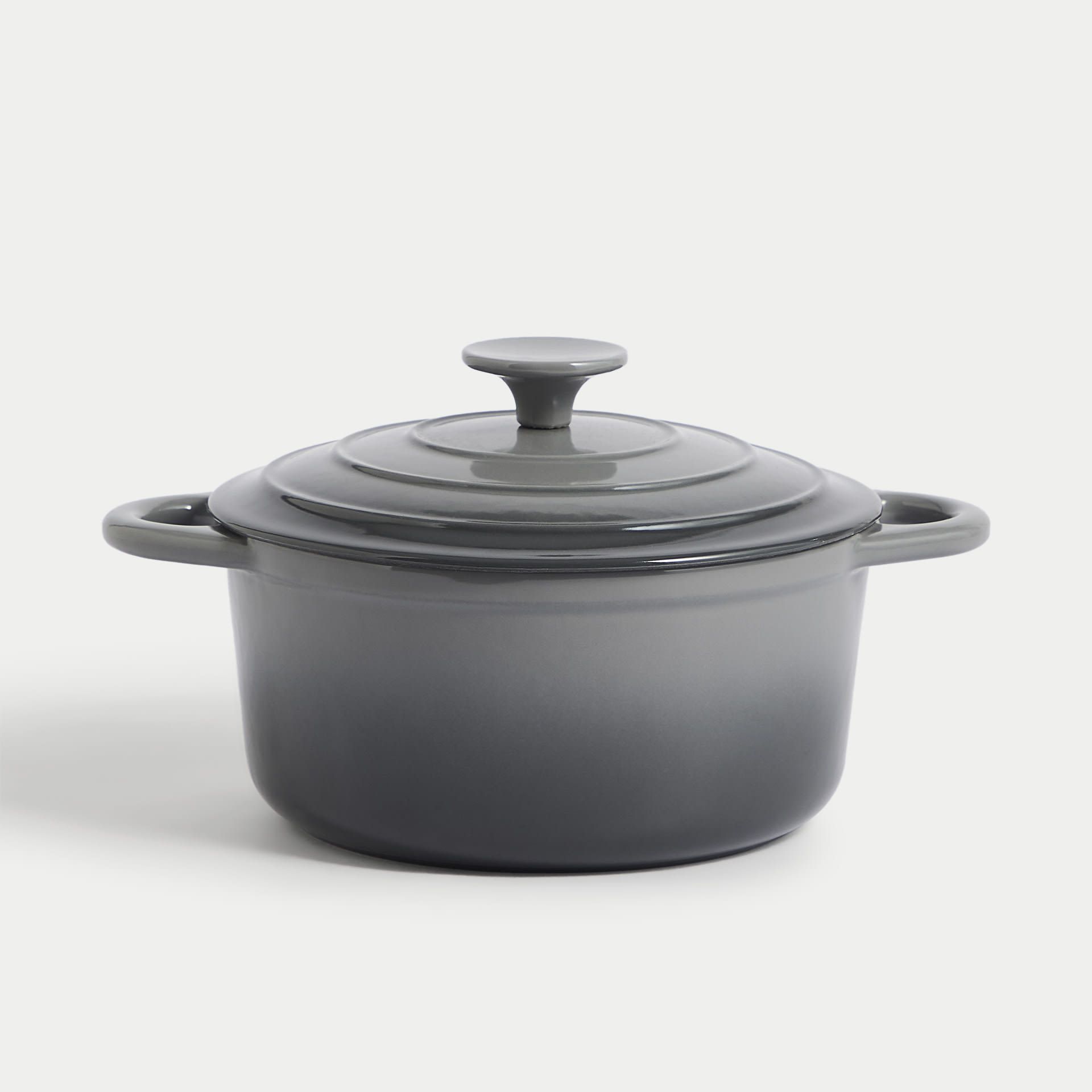
Stylish and functional, M&S has a very impressive range of cast iron casserole dishes that we are steadily cooking our way through. So far, the non-stick is flawless, the feel is exceptional, and it's just the colour range that's a little limited. We'll keep you updated with a formal review soon.
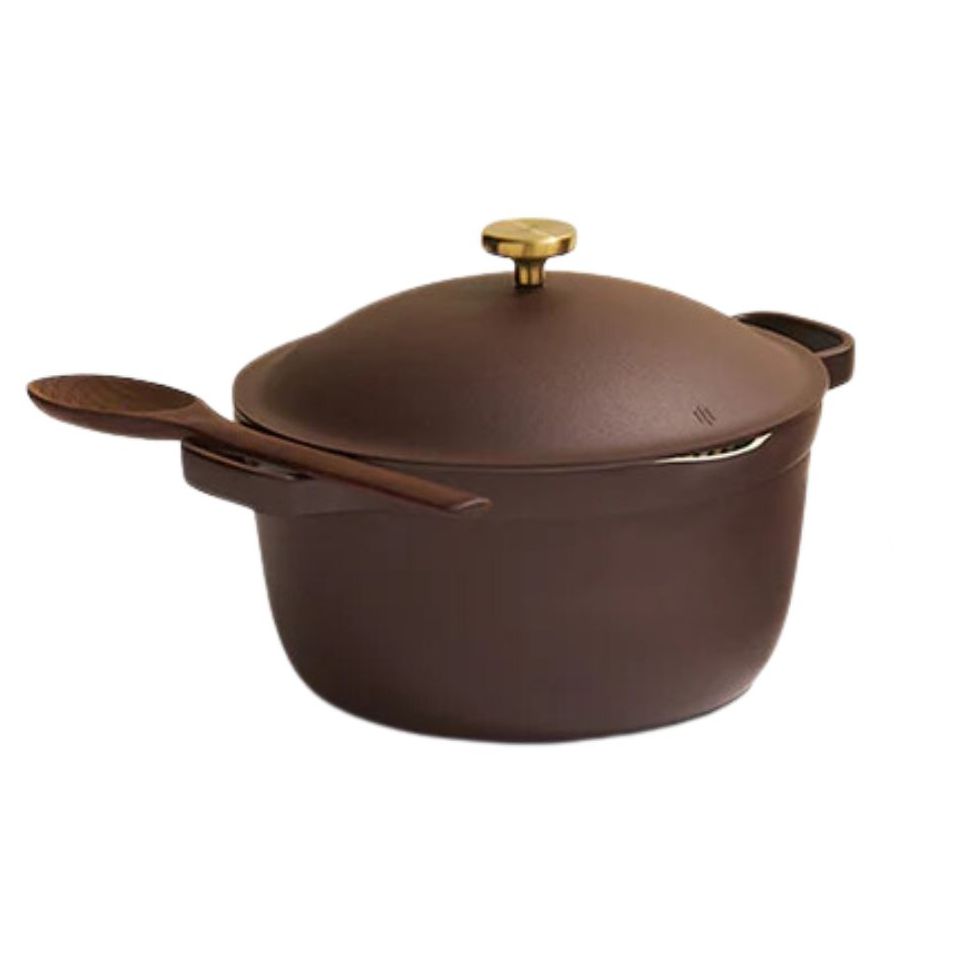
Our Place, famous for their non-toxic, stylish pans (you'll have seen the Always Pan everywhere) make their own casserole dishes. Ultra lightweight and completely non-stick, they offer versatility and ergonomics that are exceptional. This isn't on the shortlist because it's a little too big for the average home.
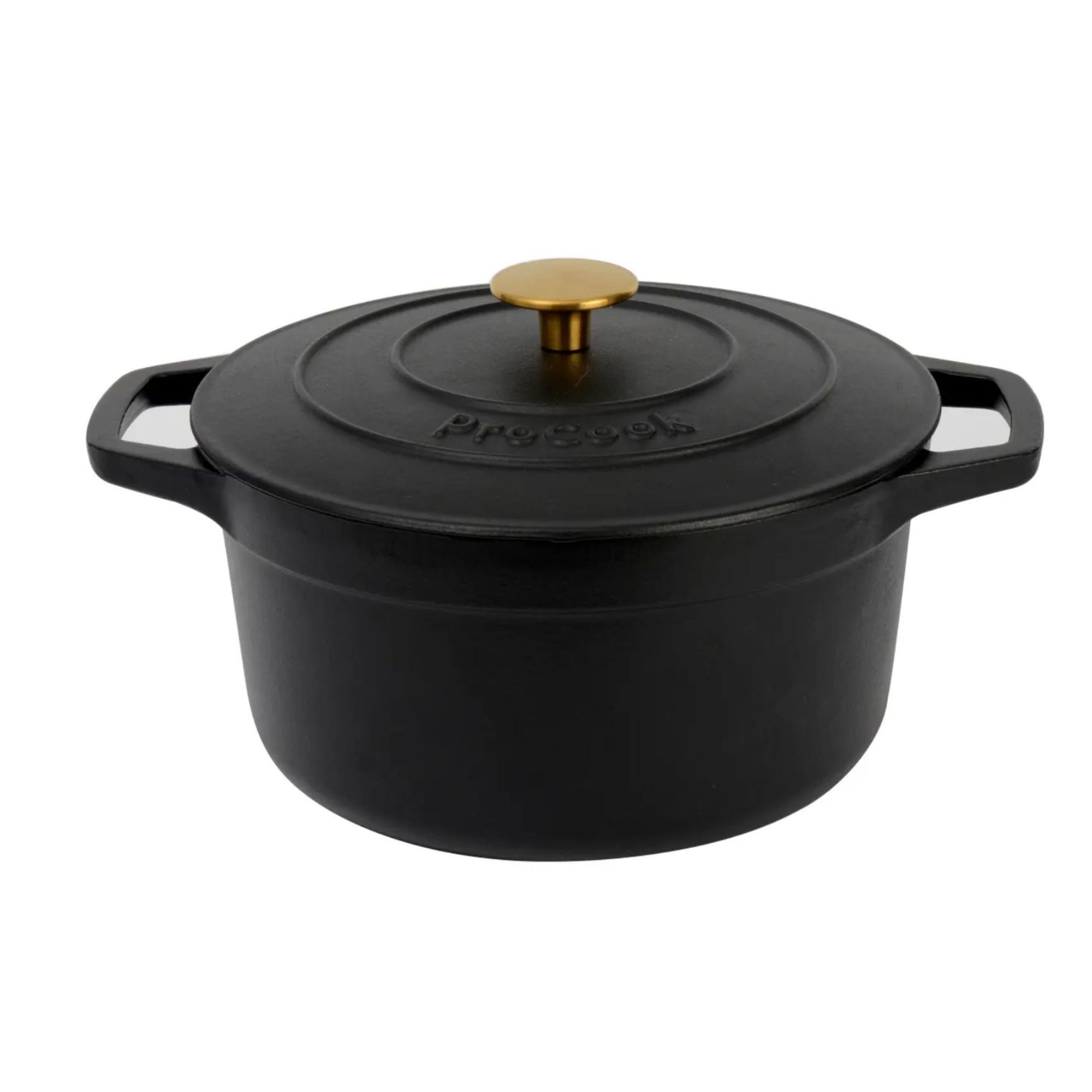
A classic, steady, reliable set, ProCook’s casseroles feel like Le Creuset. They aren’t enamel lined, which makes them a little less non-stick, but you’re also less likely to scratch them (a major plus in my house). You can find out more in my full review of the ProCook Cast Iron Casseroles.
How we test cast iron casserole dishes
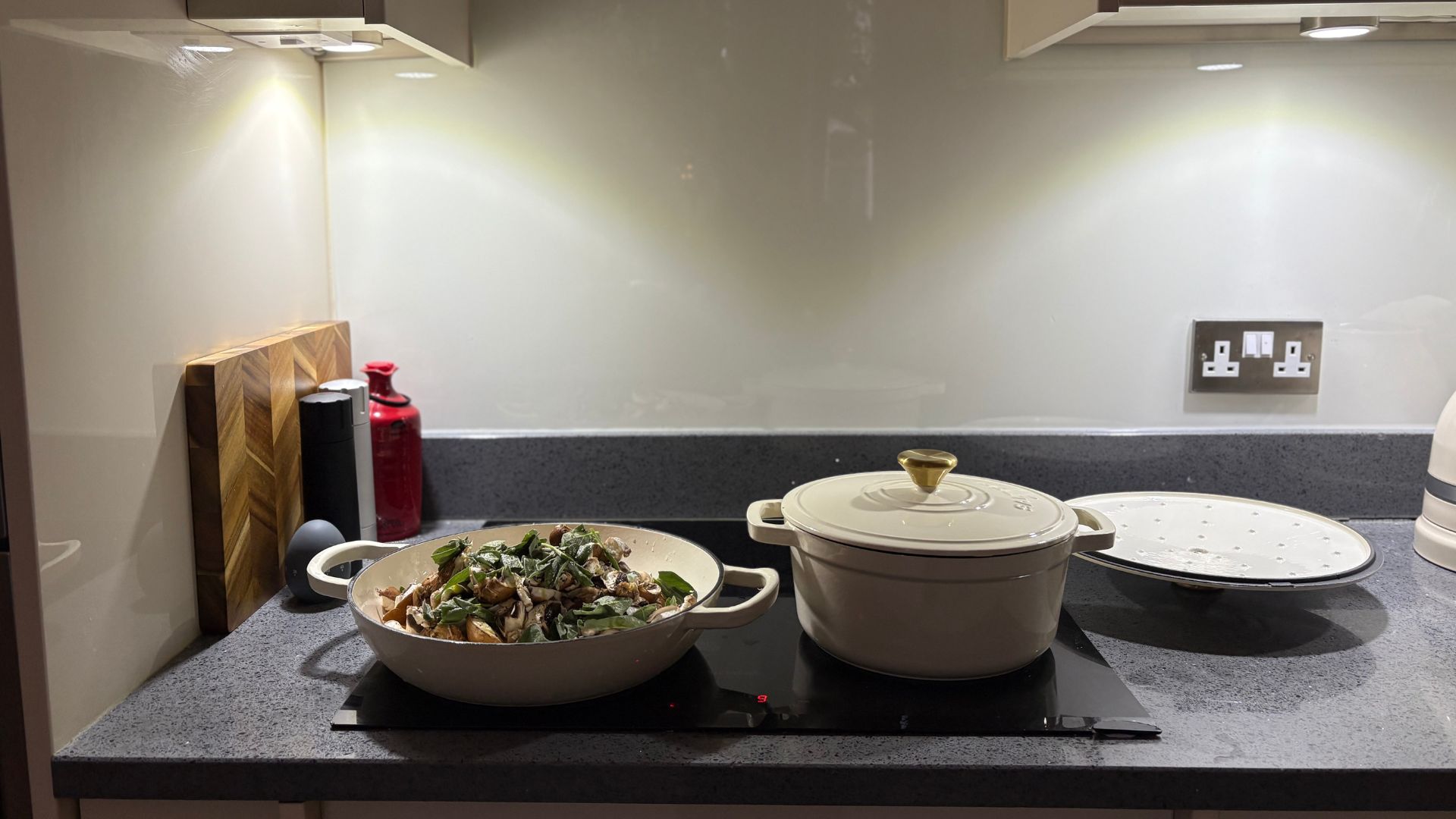
Everyone knows that good cast iron can last you for a lifetime, but how do you tell the tough from the rusty? With a little help from us.
At woman&home, we have a series of standardised tests that every cast iron casserole dish has to go through. This covers the basics: slow cooking, stewing, making a risotto, as well as bread baking, cakes, and roasts. That way, we know exactly what the cast iron is like to use. We look for even heat transfer, good retention, and excellent moisture locking. Our team also think about what it's like to handle, how non-stick it is, and what it's like to clean. That way, when one arrives in your home, you'll know exactly what to expect.
If you have any questions, don't hesitate to email me or comment below. I'm always happy to talk about all things Le Creuset.
FAQs
Keeping your casserole dish in top condition will help it last for years and ensure every stew, bake, or loaf turns out perfectly. Here’s how to clean it safely and effectively:
Let it cool first
Always wait until your casserole dish has completely cooled before cleaning. Plunging a hot dish into cold water can cause thermal shock, which may damage the enamel or warp the material.
Remove food residue
Wipe away any leftover food from the base and sides. For stubborn, stuck-on bits, fill the dish with warm, soapy water and let it soak for 15–20 minutes before washing as usual.
Use gentle cleaning tools
Avoid abrasive cleaning agents, harsh chemicals, or metal scouring pads. These can scratch and dull the surface. Instead, use a soft sponge or non-scratch brush.
What’s the difference between a casserole dish and a Dutch oven?
They’re essentially the same thing. “Dutch oven” is the American term, while “casserole dish” is more commonly used in the UK. Both refer to heavy, lidded pots (often made from cast iron) designed for slow cooking, stewing, baking, and roasting.
Should I put my cast iron in the dishwasher or hand wash?
Each element of your cast iron casserole dish will want to be cleaned in a different way. I asked Le Creuset for their advice and here's the official guidance:
Casserole body: Most enamelled cast iron casseroles with built-in cast iron or phenolic handles are dishwasher-safe, but regular dishwashing may dull the enamel over time. For the longest life, hand washing is best.
Casserole lid: Lids with stainless steel or phenolic knobs can go in the dishwasher. However, lids with gold, iridescent, copper, or black nickel knobs should always be hand-washed to protect their finish.
Dry and store properly
After washing, dry your casserole dish thoroughly to prevent moisture damage or rust (on uncoated parts). Store it in a dry place, ideally with the lid slightly ajar to allow air circulation.
Tip: For burnt-on residue, try simmering a little water with baking soda in the dish for a few minutes before washing — it’ll help lift food gently without damaging the enamel.
Why choose cast iron over other materials?
Cast iron retains and distributes heat evenly, making it perfect for slow-cooked dishes, soups, and bread. It also transitions beautifully from stovetop to oven to table. While it’s heavier than other materials, its durability and performance are unmatched. With proper care, it’ll last for decades.
Are cast iron casserole dishes suitable for all hobs?
Most enamelled cast iron casseroles work on all hob types, including induction. Always check the manufacturer’s instructions, but as a rule, cast iron’s magnetic base makes it naturally induction-compatible.
Can I put my cast iron casserole dish in the oven?
Cast iron is oven-safe, but always check the lid knob’s material before turning up the heat. Phenolic (plastic-style) knobs usually withstand up to around 200°C, while stainless steel ones can go much higher.
How heavy are cast iron casserole dishes?
They’re heavier than aluminium or stainless steel cookware. A 4.2L round casserole can weigh around 5–6kg when empty. If weight is a concern, look for lighter alternatives like cast aluminium, which offers a similar look and heat performance without the heft.
What size casserole dish should I buy?
It depends on your household size and what you plan to cook:
2–3L: Ideal for couples or smaller portions.
4–5L: Suits families or batch cooking.
6L+: Great for entertaining or making large roasts and soups.
How do I stop food from sticking to cast iron?
Enamelled cast iron doesn’t require seasoning like traditional bare cast iron, but it helps to preheat the pan slowly and use enough oil or liquid. Avoid cooking on very high heat, which can cause food to burn and stick.
Can I put my cast iron casserole in the dishwasher?
Technically, yes, but it’s not recommended. Frequent dishwashing can dull the enamel finish over time. Hand washing with warm, soapy water and a soft sponge will help preserve its colour and shine.
Cast iron season is well and truly in full swing and every year these get more popular, so expect to see lots more brands working harder and offering more bang for your buck. I'll be keeping you up to date on the latest and greatest launches. Then, if you choose to expand your collection, you can take a look at this guide to the best cast iron skillets.
Sign up to our free daily email for the latest royal and entertainment news, interesting opinion, expert advice on styling and beauty trends, and no-nonsense guides to the health and wellness questions you want answered.

Laura is woman&home's eCommerce editor, in charge of testing, reviewing and creating buying guides for the Homes section, so you'll usually see her testing everything from the best dehumidifiers to sizing up the latest Le Cruset pot. Previously, she was eCommerce editor at Homes & Gardens magazine, where she specialised in covering coffee and product content, looking for pieces tailored for timelessness. The secret to her heart is both simplicity and quality. She is also a qualified Master Perfumer and holds an English degree from Oxford University. Her first editorial job was as Fashion writer for The White Company.